Editorial: Observations and Takeaways at Watches & Wonders 2024
Faces and brands.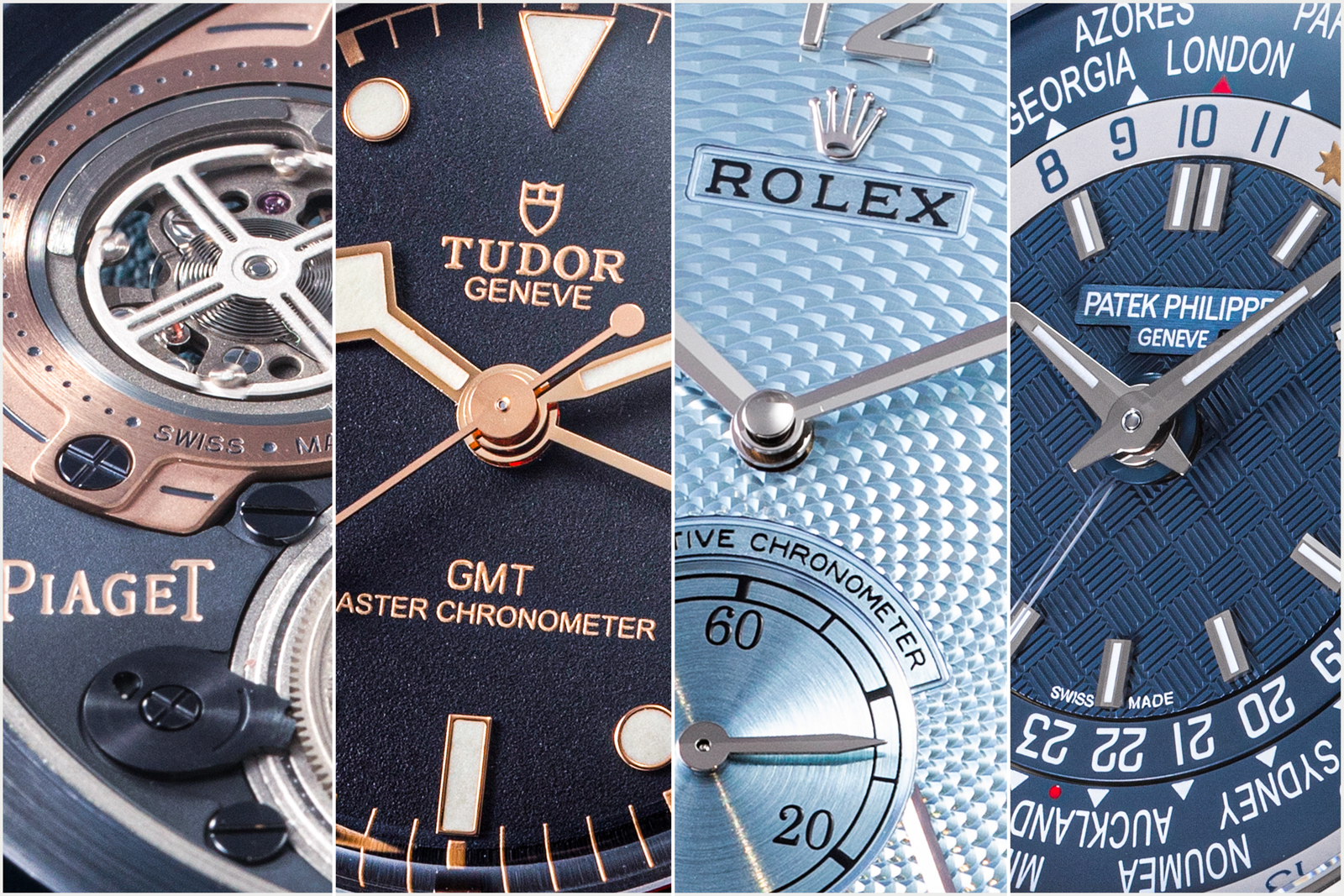
Watches & Wonders 2024 just closed its doors earlier this week, and as usual attendance was up. Visitors increased 14% over last year, reaching some 49,000. It certainly felt more crowded, though sentiment was muted.
Glamour, however, was delivered by the visits of Gisele Bündchen and Kylian Mbappé at IWC and Hublot respectively. Interestingly, there seemed to be fewer notable independent watchmakers walking around the halls then before, perhaps reflecting their success (which means they needed to meet clients).

Gisele Bündchen sporting the new Portugieser chronograph. Image – Watches & Wonders
Destiny
On the topic of people, the inevitable questions about who’s going where were circulating as usual. When will Cartier’s Cyrille Vignernon retire and who will replace him? Will there be management changes at the LVMH watch division with Frederic Arnault in charge? Insiders have some idea and the rest of us will have to wait.
Questions were also asked about brands, specifically smaller players with mixed fortunes – whether they will be sold or simply shut down, like Rebellion was a few months ago. There is of course the perennial sale of Parmigiani, but that isn’t really news – the brand has been quietly on the market for years with no takers. Some brands might have been lucrative exits for their owners a year ago, but now the discussion about a dimmer fate reflects the palpably normalised watch business.

Where the outlook is always bright. Image – Watches & Wonders
In terms of rebranding, however, the biggest story was Bremont. The brand’s new investors, including combative American hedge fund manager Bill Ackman, installed Davide Cerrato, the Italian watch designer formerly of Tudor and Montblanc, to turn around the brand, which was inauspiciously shunted off to a less visible area of the exhibition.
To stem the streak of losses since 2015, Mr Cerrato drastically revamped the brand, from logo to product to manufacturing. The new watches have a generic vintage-inspired sports watch look, but with more affordable prices than before. The affordability, however, results from shifting to Swiss suppliers, instead of trying to manufacture in the United Kingdom. The in-house ENG300 movement, for instance, will no longer be rolled out widely across the collection.
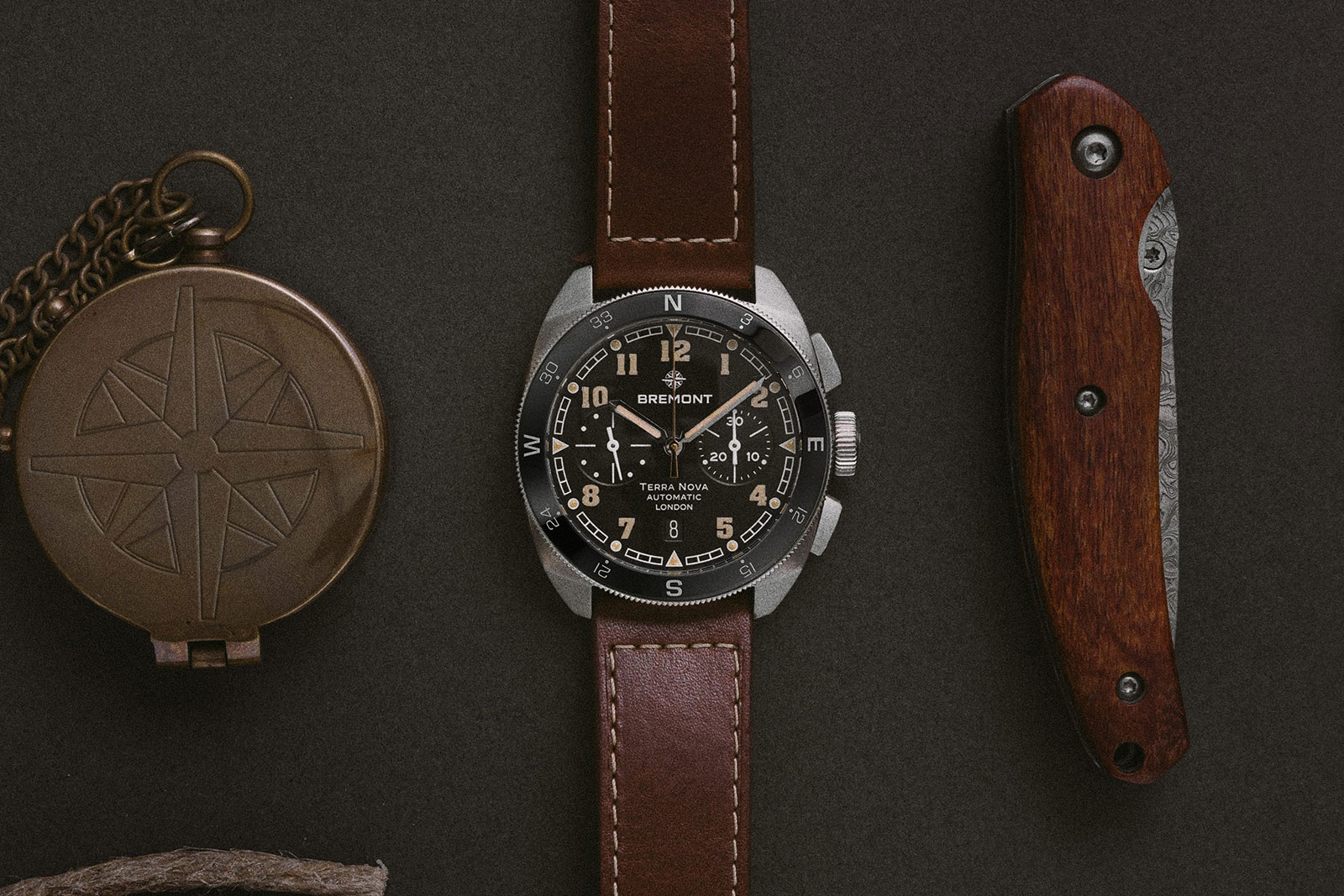
The Bremont Terra Nova 42.5 Chronograph. Image – Bremont
Most notable is the shift in the brand’s positioning. Now no longer part of management, Bremont’s founders, Nick and Giles English, carved out a niche for the brand as a supplier to military units and other professionals. The pair created a compelling story for the brand, which now seems to be going towards a more generic profile as a maker of vintage-inspired sports watches.
Product
With demand for luxury watches definitively slowing down, brands have uniformly begun to acknowledge this reality, albeit from slightly different perspectives. As always, it is the most successful brands that have the strongest grip on reality, which translates into their product offerings for the year.
This is subtle but discernible when observing the new offerings. Producing higher value versions of a slow selling watch, for instance, is one way of maintaining or even boosting revenue while maintaining or reducing production – the Rolex Sea-Dweller Deepsea in 18k yellow gold being one example.
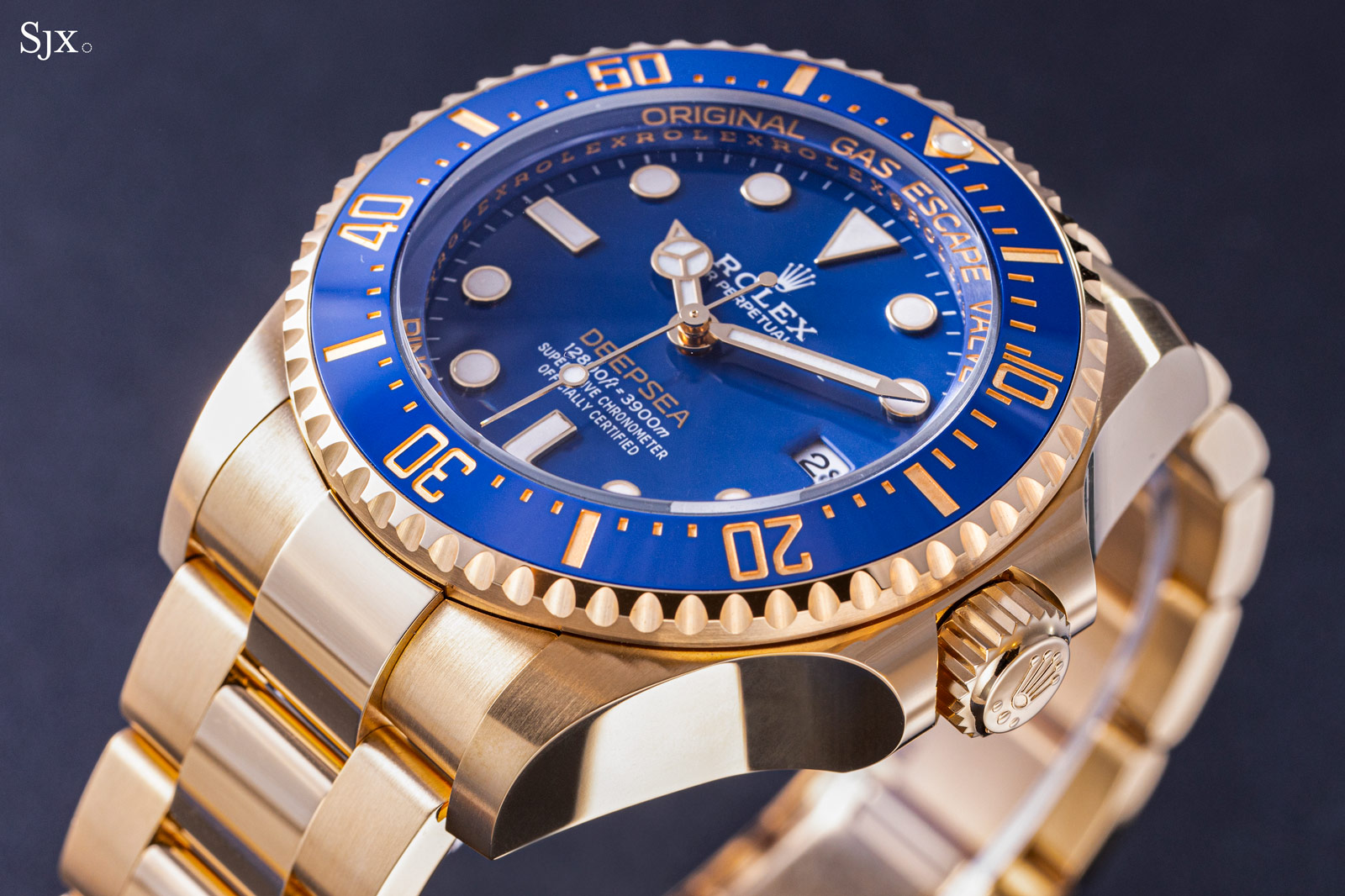
The big and bold Deepsea in 18k yellow gold
There were few major or notable releases at the fair, which is partially explained by the widely acknowledged slowdown, but also because brands are now simply launching watches later in the year.
One of the worst kept secrets is Patek Philippe’s upcoming launch of an all-new collection, the first in 25 years since the Twenty-4 in 1999. Believed to be a line of sporty-elegant watches – neither Calatrava nor Nautilus – the new collection will be revealed in fall 2024.

The luminous Patek Philippe booth that did not show off the soon-to-be-launched collection. Image – Watches & Wonders
While 2024 was generally a year of conservative releases across the board, there were still some bright spots, especially from Geneva brands Vacheron Constantin, Piaget, and Patek Philippe.
Top of the list at the high end is, of course, the Vacheron Constantin Les Cabinotiers “The Berkley” Grand Complication. Named after the American collector who commissioned it, the Berkley boasts a record-breaking 63 complications, including a world-first perpetual Chinese calendar. The watch is colossal in both its technical ingenuity and its physical dimensions. In fact, at just over 50 mm in height, the Berkley is 25 times thicker than the next highlight on the list.
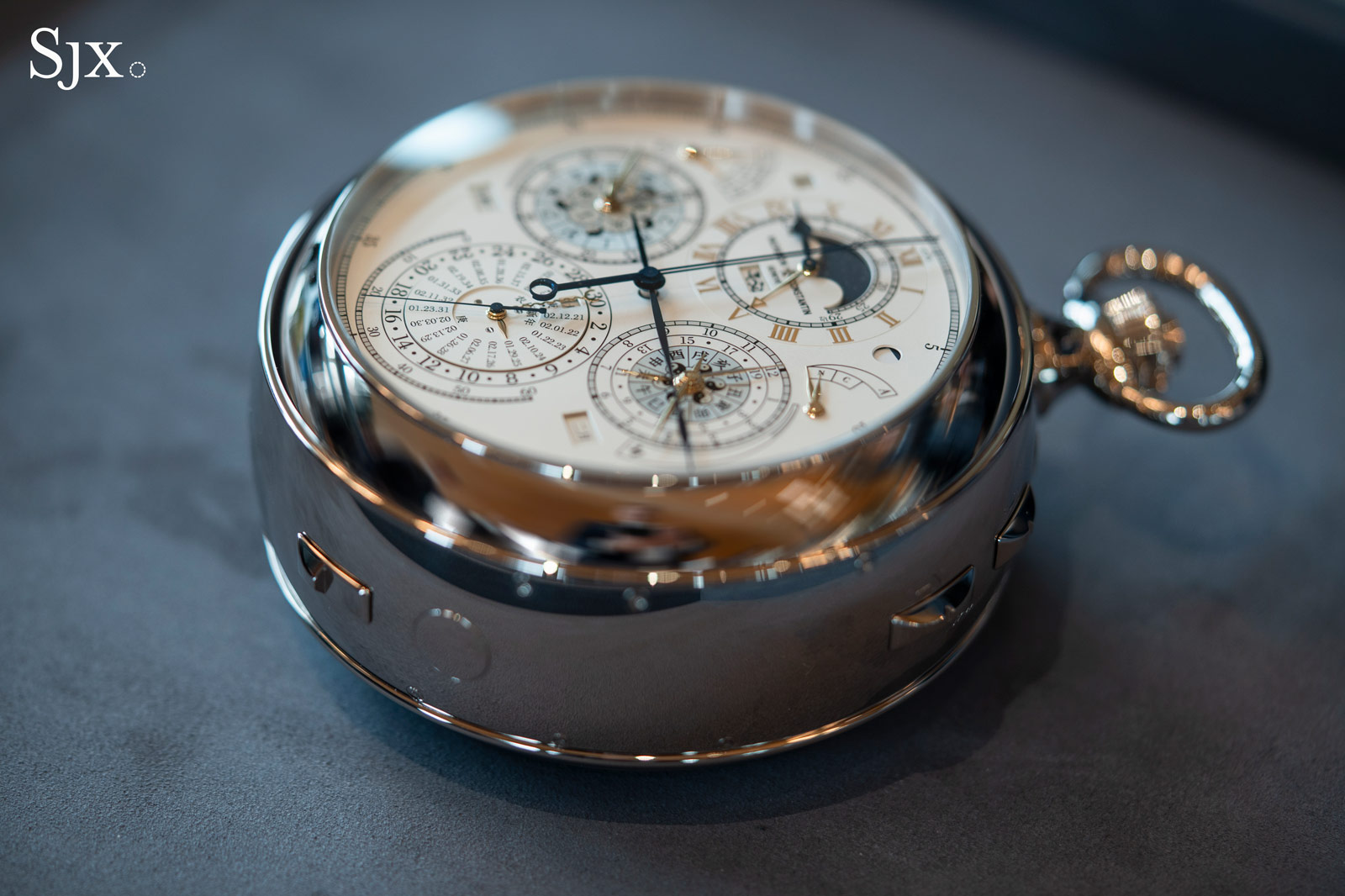
The monumental Berkley
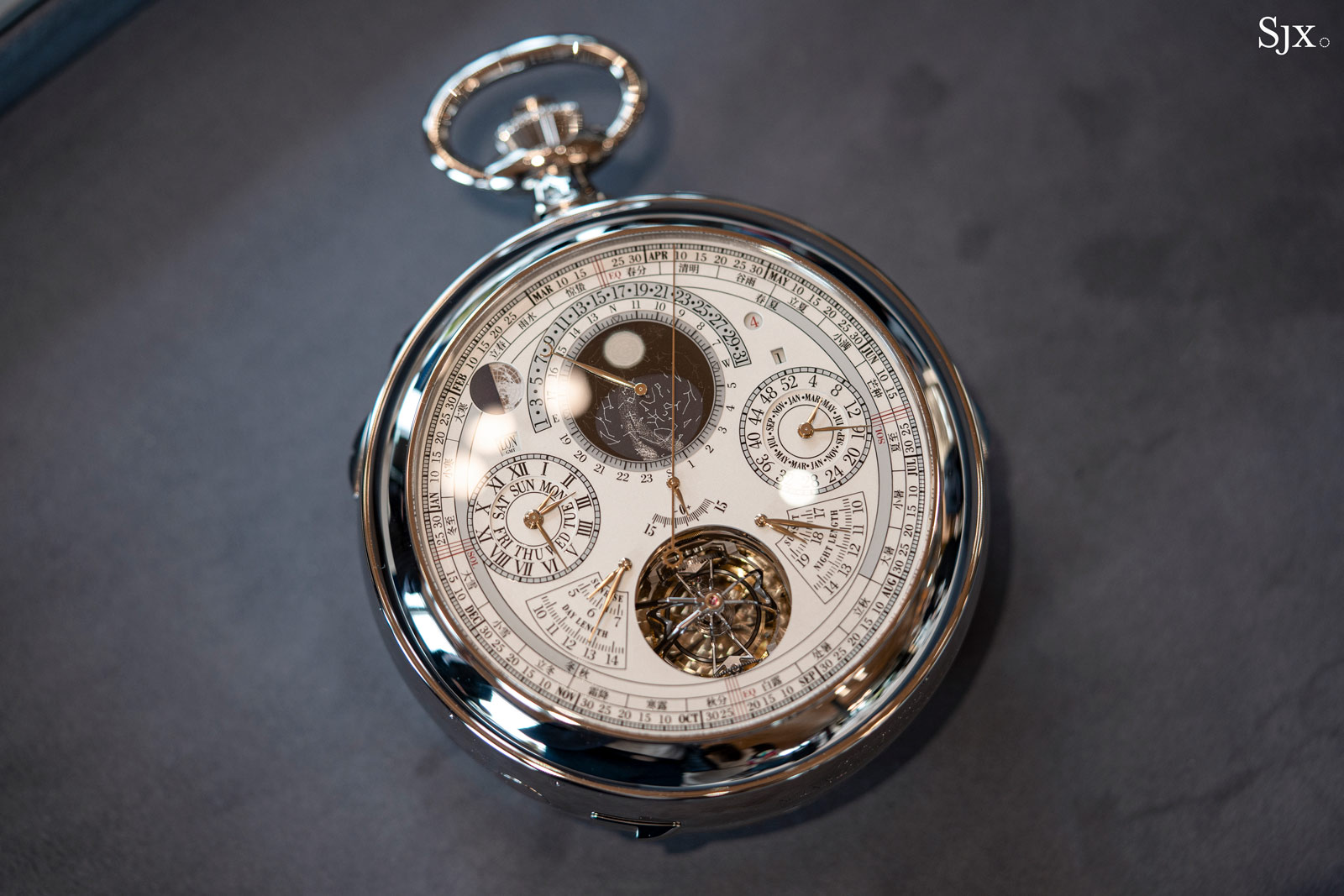
The reverse face of the Berkley showing the Gregorian calendar and star chart amongst other things
On the wristwatch front, the star of the show was arguably the Piaget Altiplano Ultimate Concept Tourbillon, which set a new world record as the thinnest tourbillon ever at just 2 mm thick. But unlike recent ultra-thin record-breakers from Richard Mille and Bulgari, the AUC Tourbillon looks and feels like a normal watch. It has a wearable round case and two hands on the same axis.
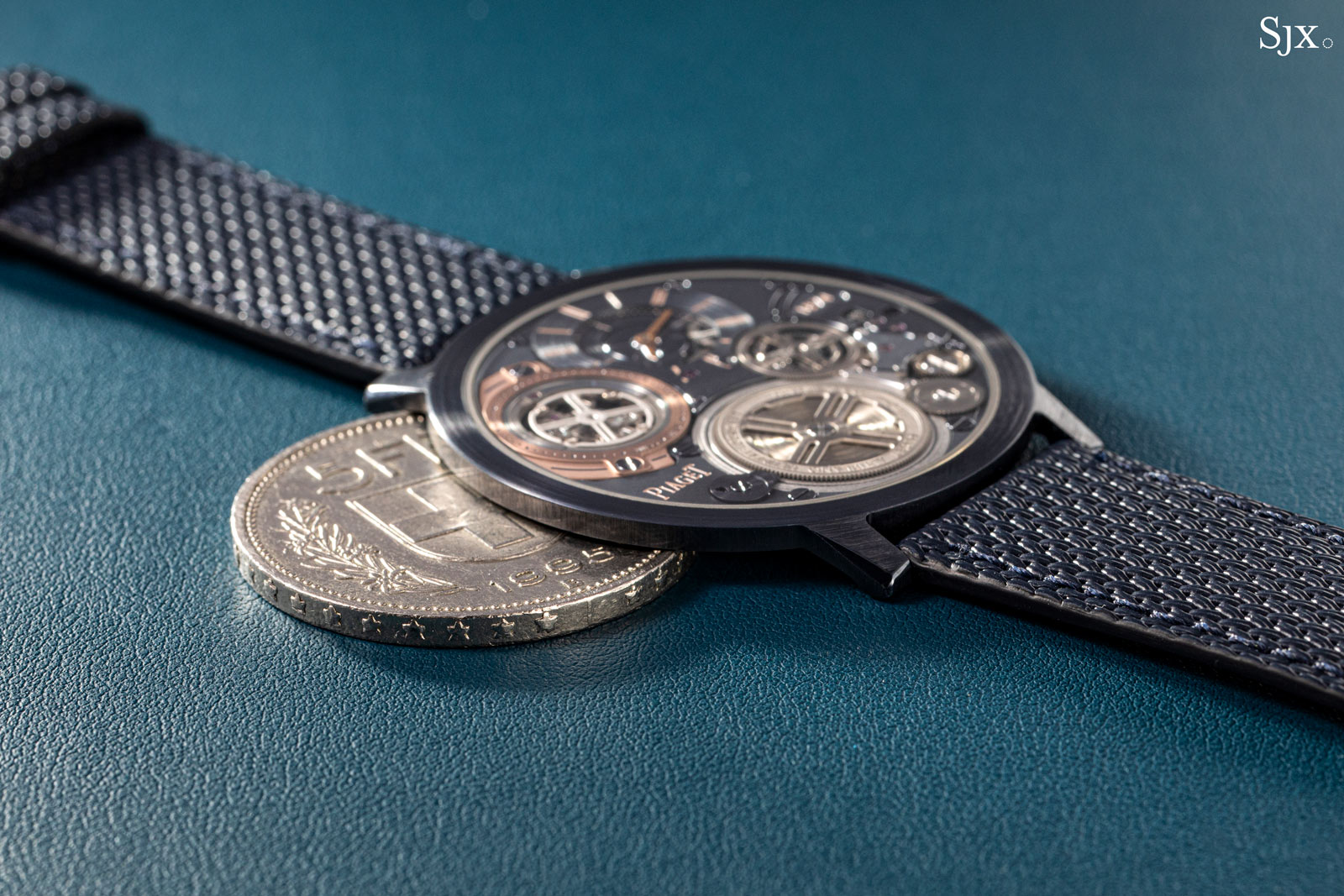
The AUC Tourbillon is slimmer than a Swiss five-franc coin
Despite its paper-thin construction it feels deceptively robust, with enough visual depth in the design to make the overall package feel almost miraculous.
One of the most visually dynamic aspects of the AUC is the sapphire window in the case back that reveals the tourbillon cage, including a view of the rarely seen impulse roller thanks to the novel construction of the oscillator.
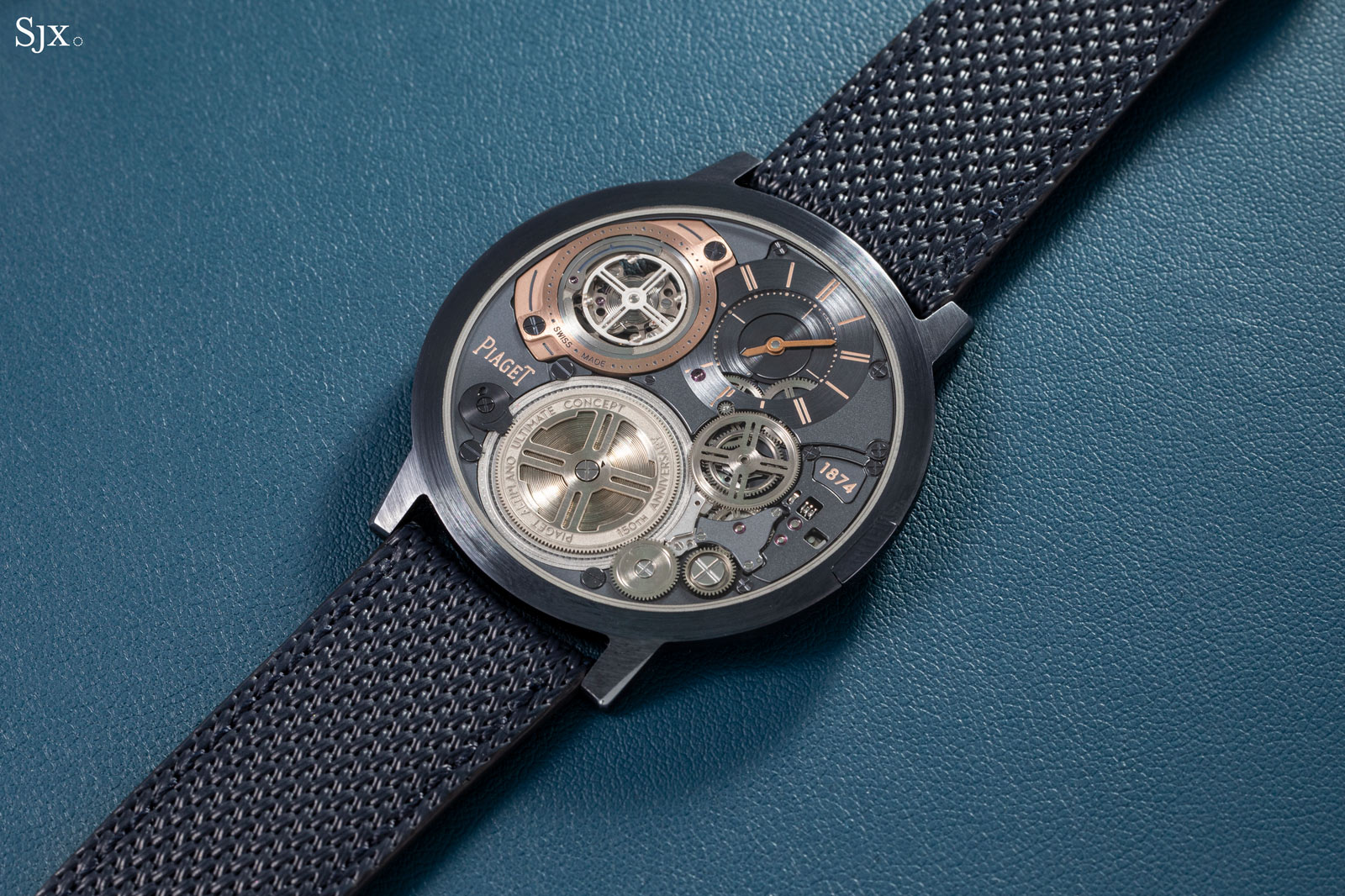
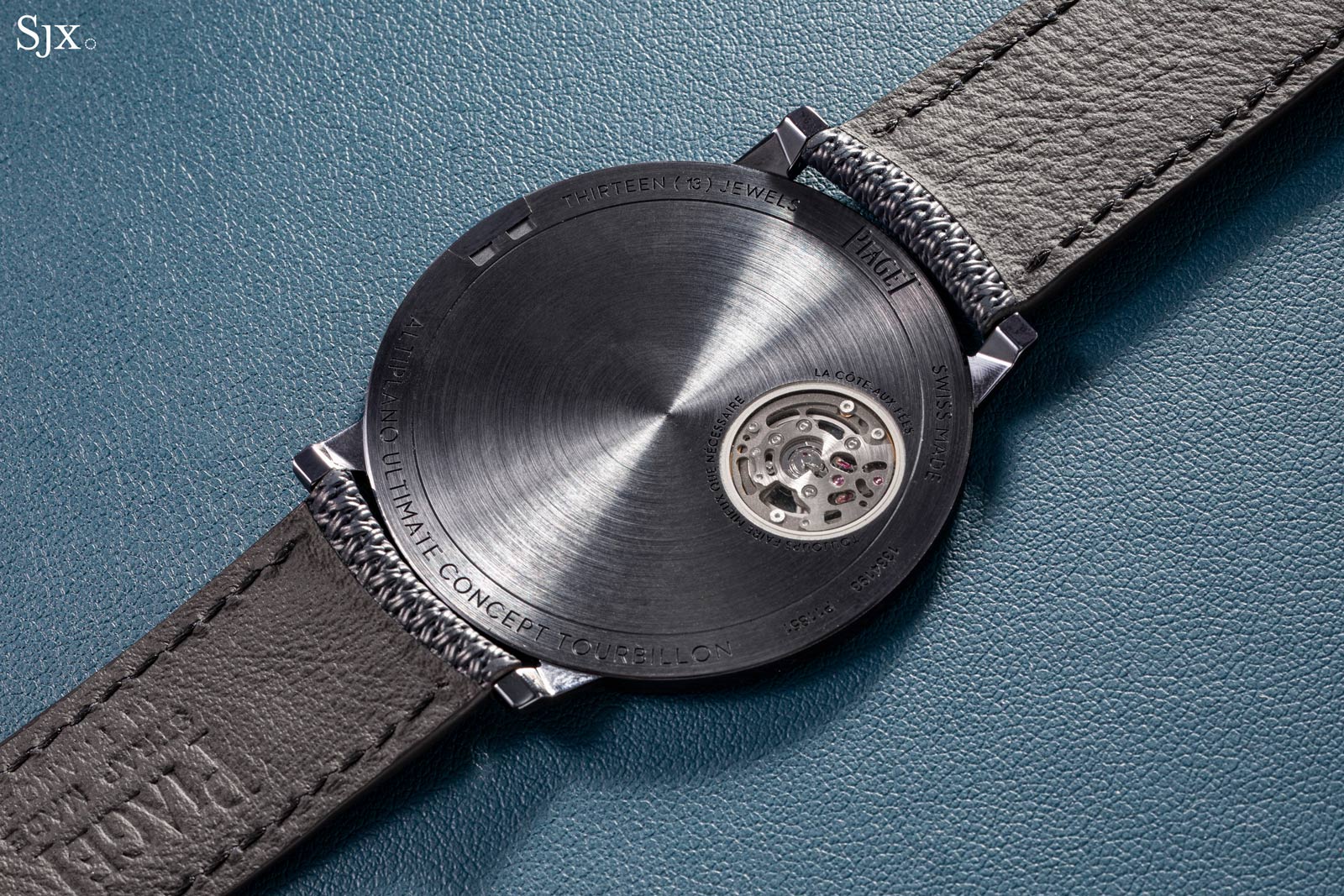

Not to be outdone, cross-town rival Patek Philippe debuted the ref. 5330G World Time and its largest-ever collection of Rare Handcrafts, which will be the subject of a future story. The ref. 5330G features the same clever date mechanism first seen in the Tokyo edition released last year, enabling it to display the correct date at all times, even when traveling east across the International Date Line.
From a technical standpoint, this is more difficult than it may appear, since the date is the same everywhere in the world during one hour each day (as explained in this video). To handle this extreme scenario case and prevent the date mechanism from jamming, Patek Philippe developed a differential that splits the forward and backward date operations onto two levels, enabling them to cancel one another when needed.
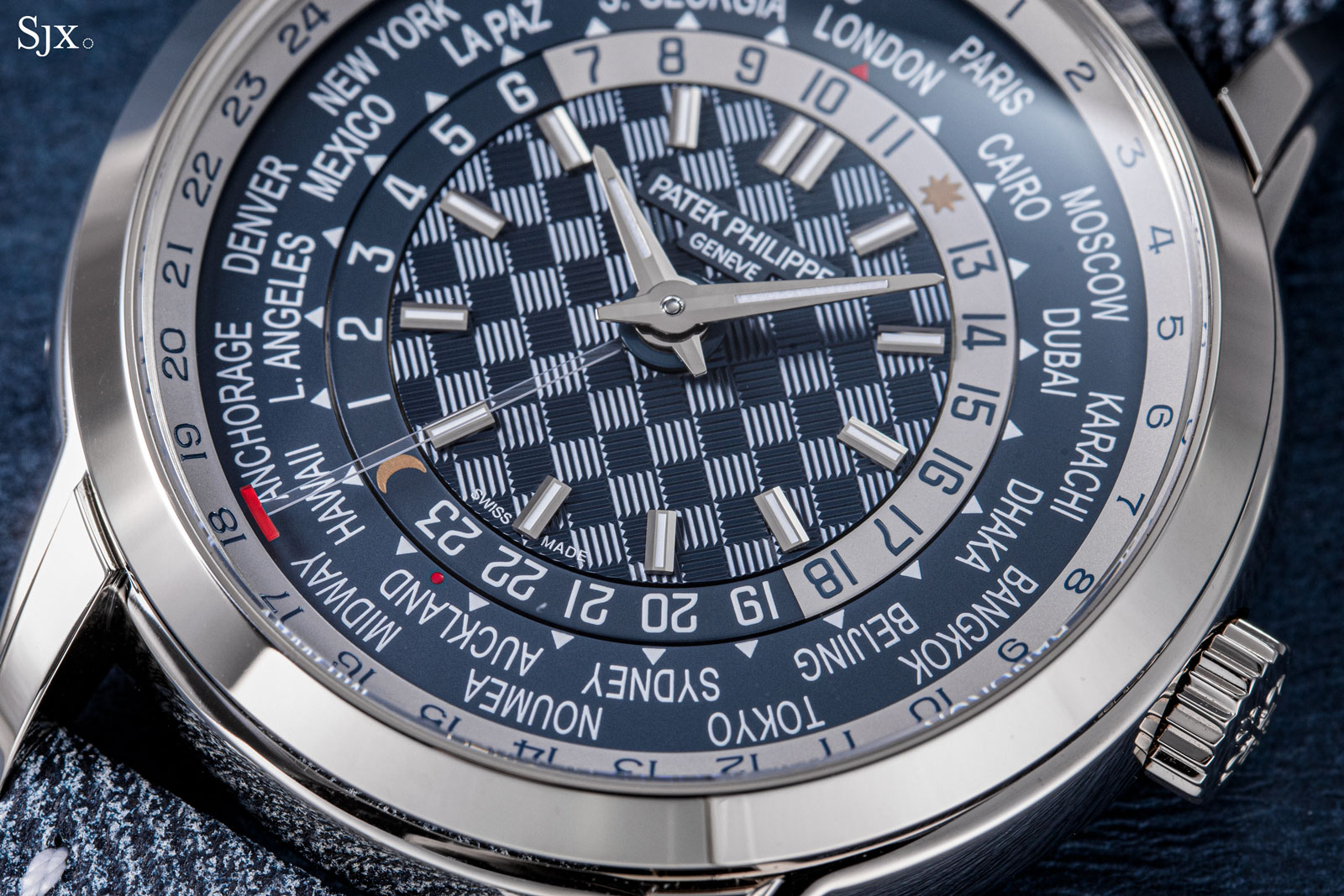
The ref. 5330G sports a “carbon” pattern guilloche dial
But one can’t talk about calendars at W&W 2024 without discussing the IWC Portugieser Eternal Calendar, which features a secular perpetual calendar capable of displaying the correct date every day until at least February 28, 4000.
Even this limitation is societal, rather than technical, as it has not yet been decided whether there will be a leap year added to the year 4000. The Eternal Calendar also features the world’s most accurate moon phase display, which will vary by just one day every 45 million years.
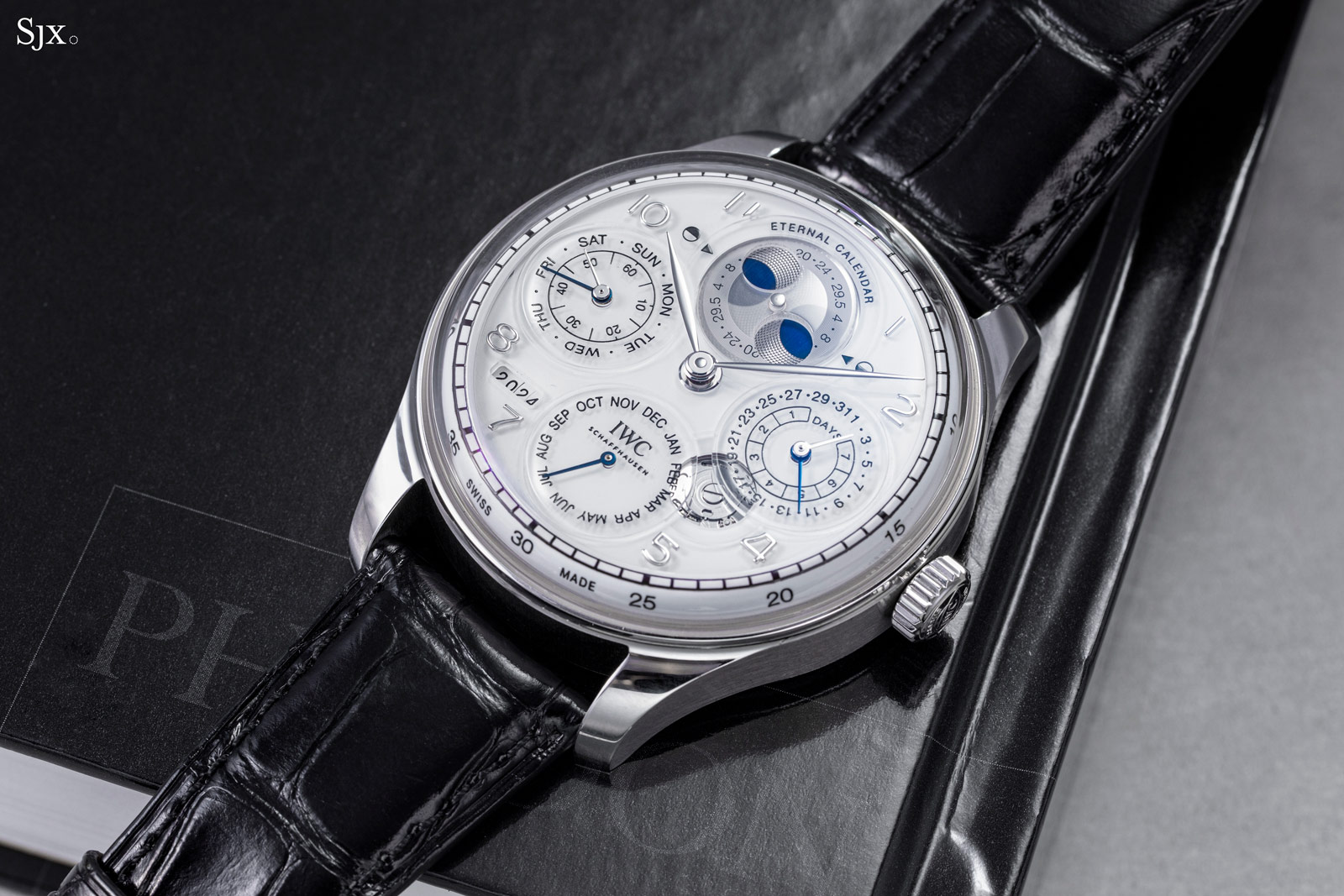
The Portugieser calendar that goes forever
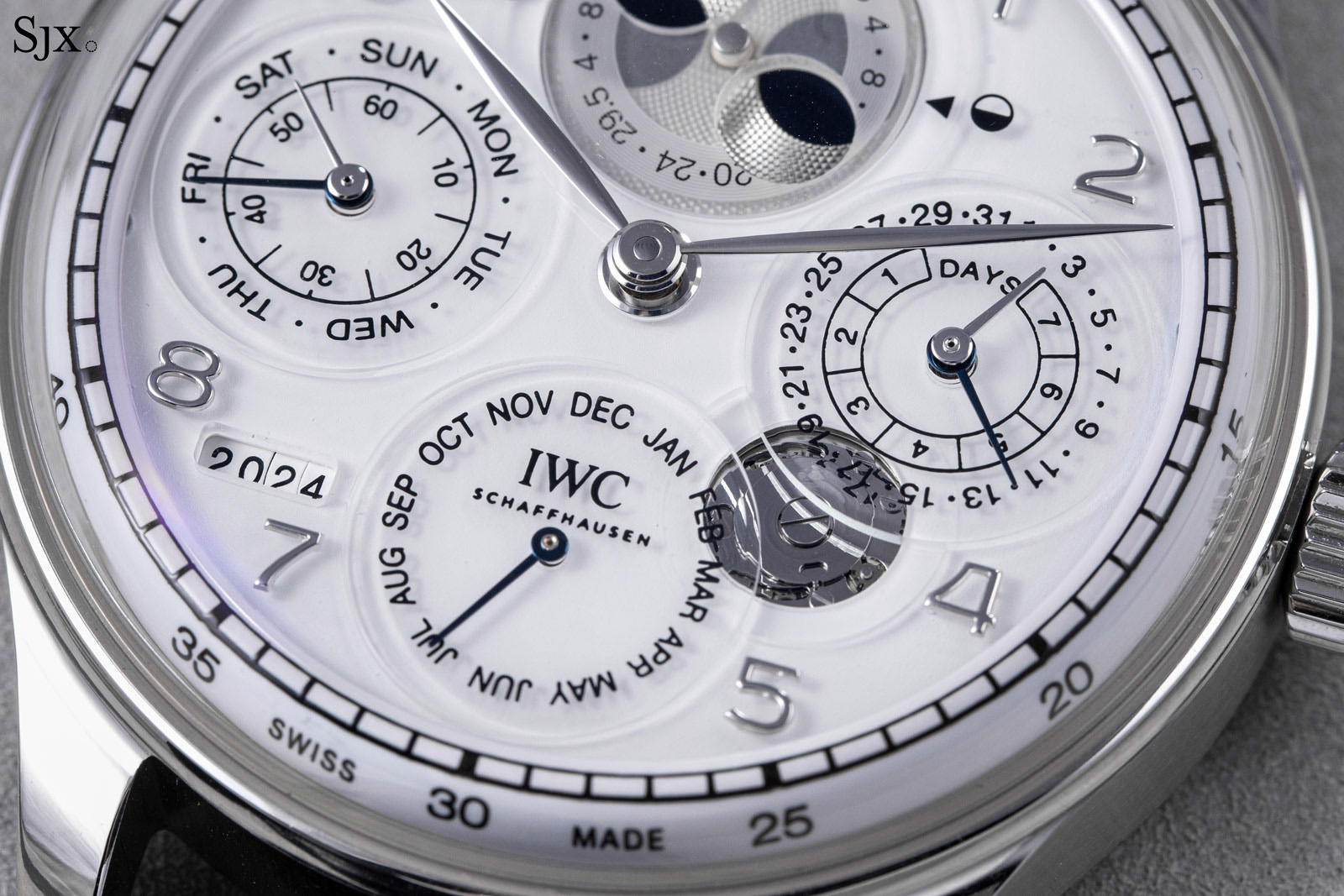
Impressive as these capabilities are, the watch also manages to look good, with a stepped dial made of sapphire crystal, with a window to view the secular cam which makes just one rotation every 400 years. While the watch is curiously not a limited edition, the CHF150,000 price point is far, far beyond IWC’s home turf and will result in a limited audience.
For the rest of us, IWC also refreshed the core Portugieser range, with improved cases that are both slimmer and more water resistant, while boasting appealing new dial finishes and colours. The improved dial finishing, comprising lacquering, appliques, and lapping, is surprisingly evident in person.
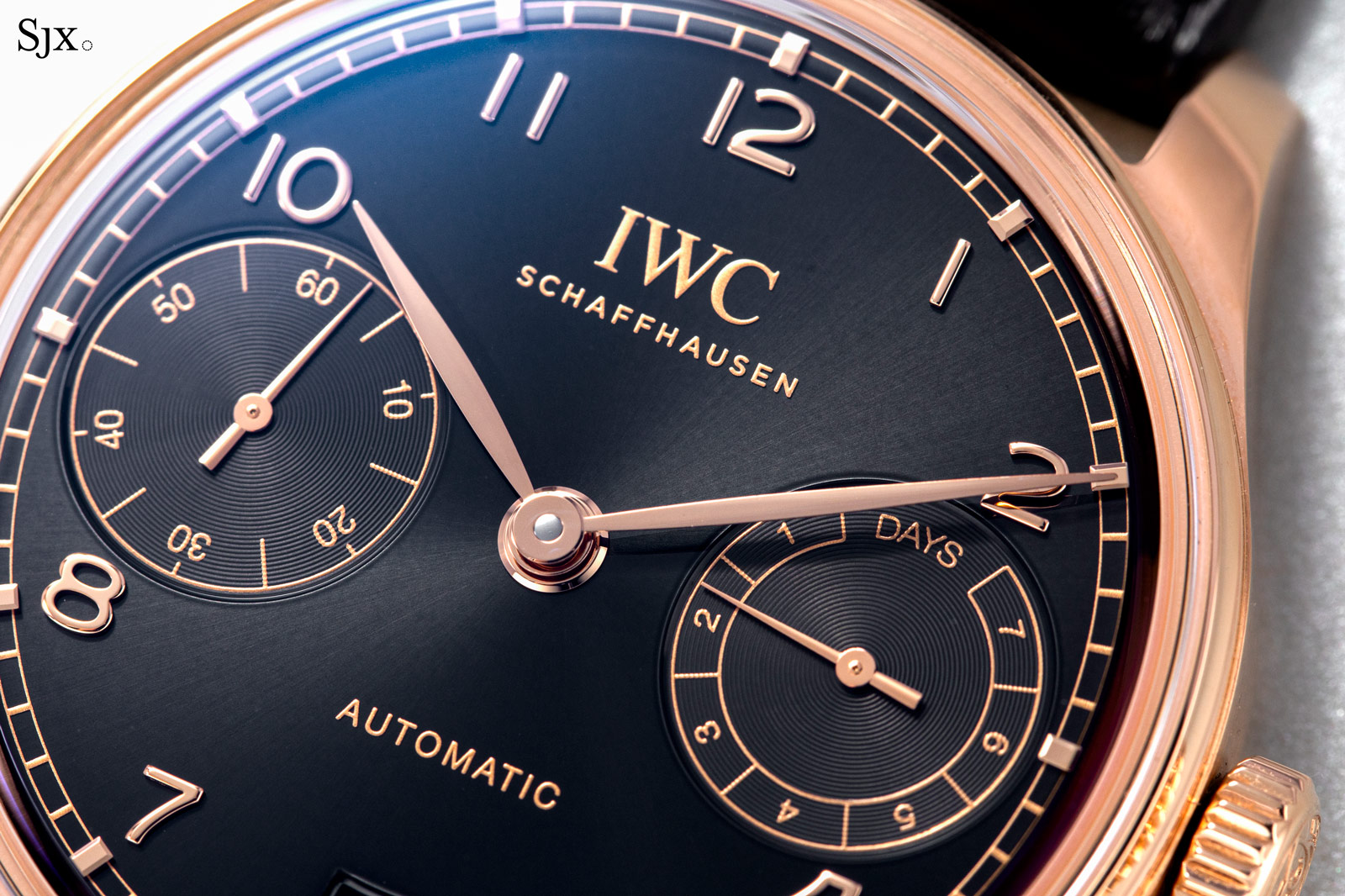
The clear lacquer finish on the new Portugieser dials is apparent under the light
Cartier also debuted several accessible models from its signature collections, including an animal-fantasy version of the Pebble and the latest iteration of the Tortue. Though historically faithful in terms of design, Privé Tortue Monopoussoir Chronograph is notable for having a brand-new in-house chronograph movement – the only new chronograph movement launched during the fair in fact.
Developed with the help of a specialist, the cal. 1928 MC is built on Cartier’s in-house architecture, but is still a new calibre with interesting features, most notably the fact that it’s a form movement with a barrel shape to match the case. In addition, the cal. 1928 MC is surprisingly slim, giving the watch ideal proportions.
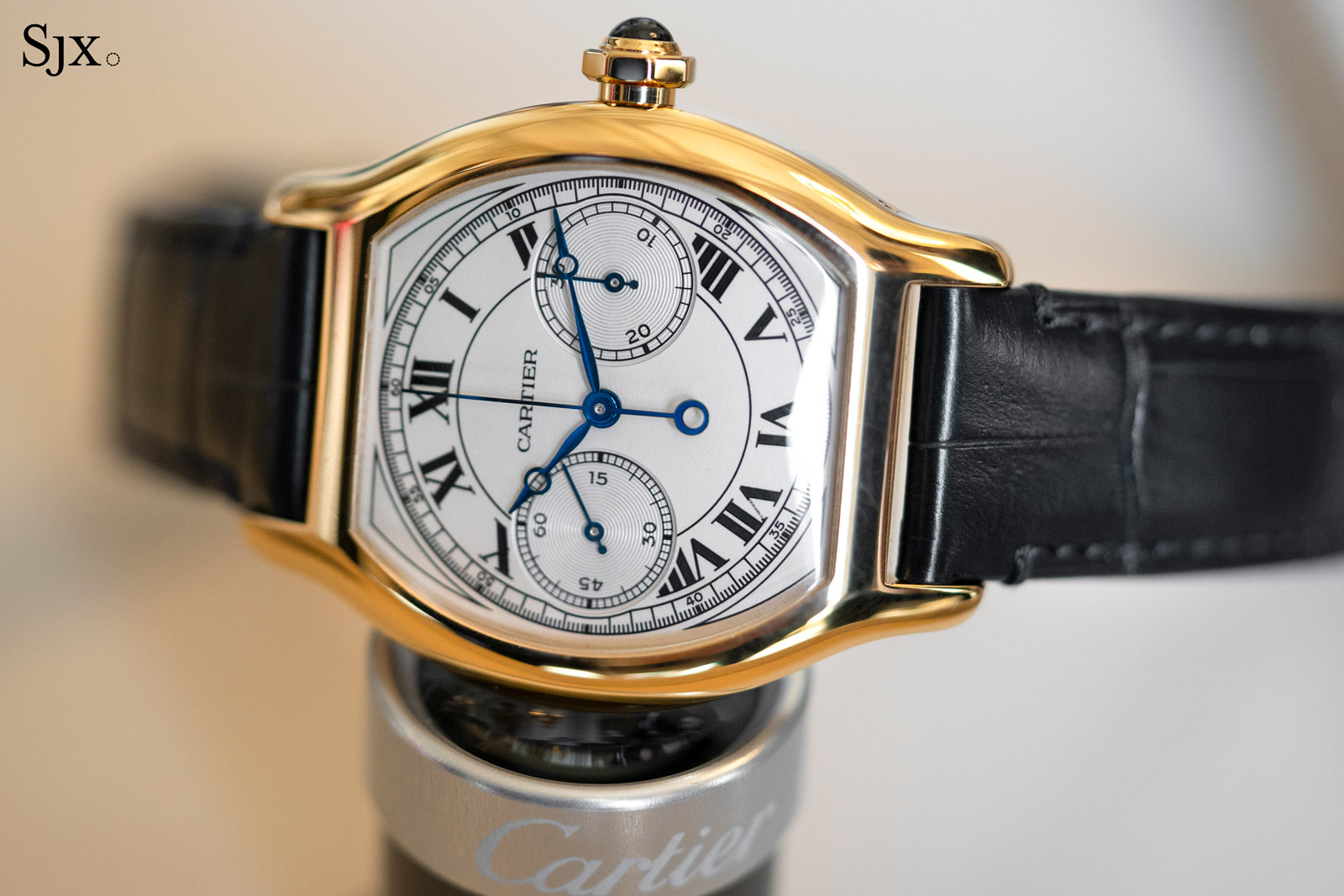
The Tortue Monopoussoir Chronograph in yellow gold
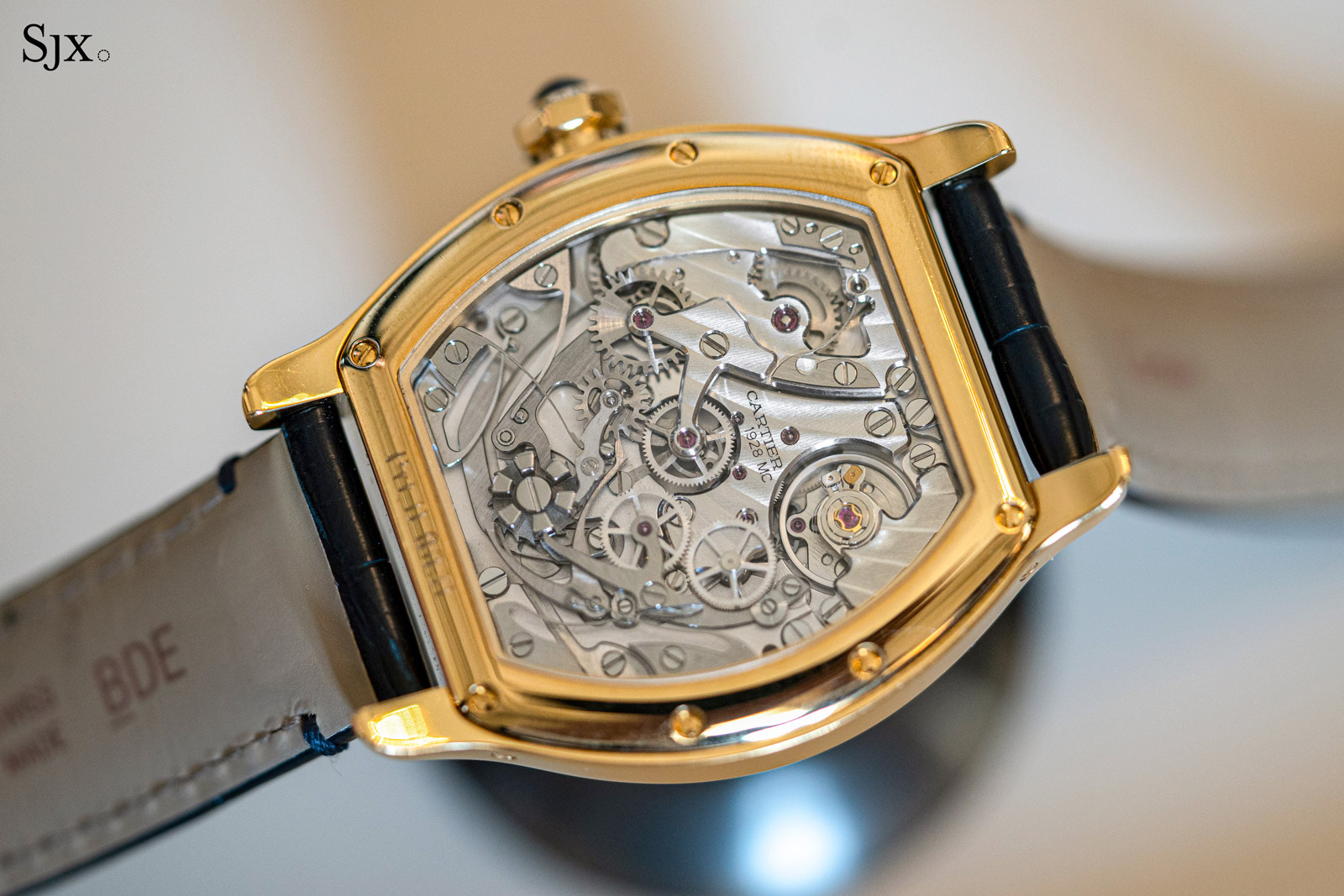
The cal. 1928 MC
Worth mentioning for the breadth, quality, and cohesiveness of its collection is Chanel. Perhaps unsurprisingly since it is a fashion house first, Chanel’s new offerings were diverse yet faithful to the brand’s house style, with many conceived as a tribute to couture.
The most impressive timekeeper in the collection was also an object, the Couture O’Clock Musical Clock, an table clock with automaton and music box that costs well over €2 million – and was already sold by the first day of the fair. The rest of the collection included several lavish, gem-set pendant watches that were as impressive for their craft as the prices, which were mostly €500,000 to well over €1 million.
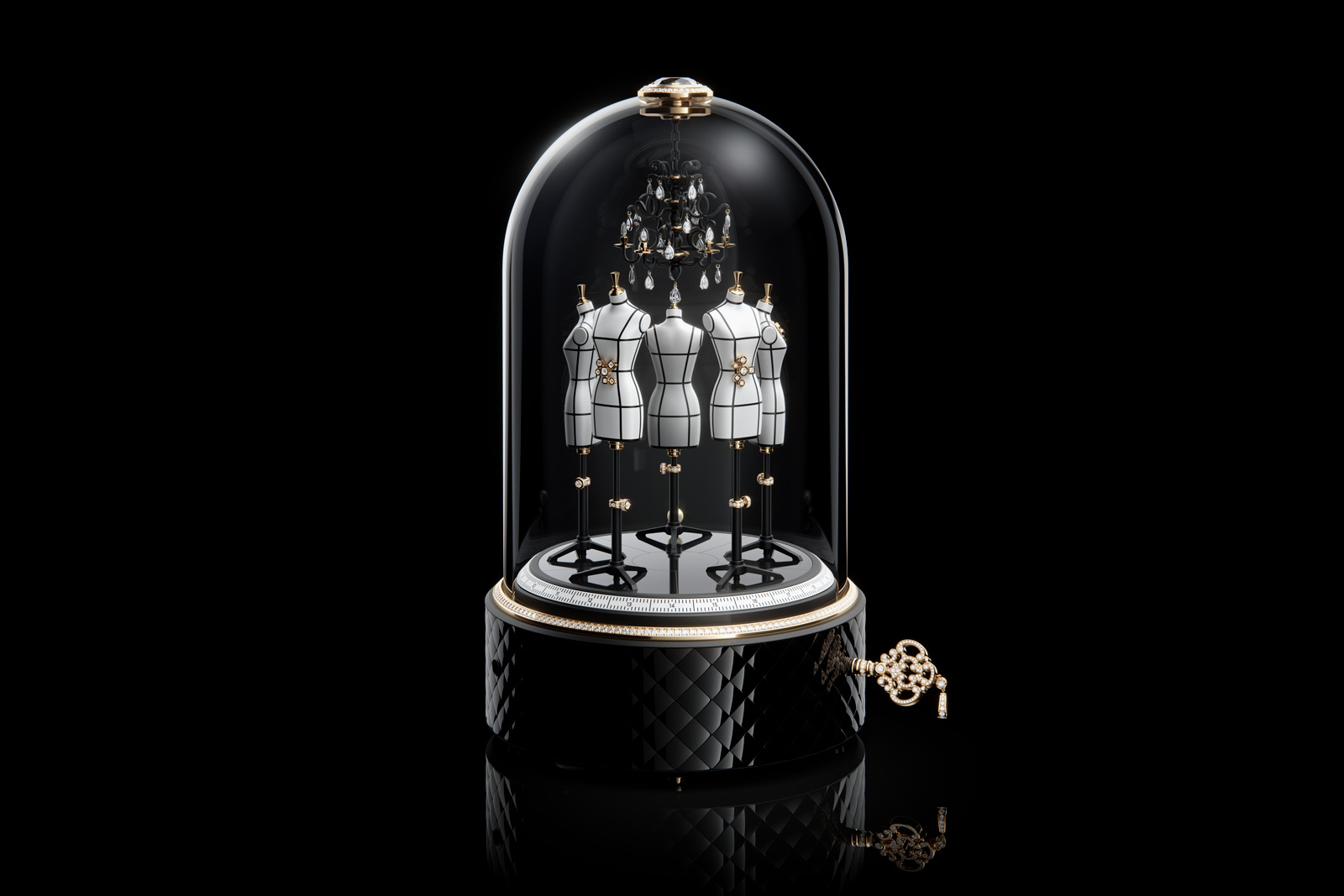
The Couture O’Clock Musical Clock. Image – Chanel
More familiar in terms of design was the Chanel J12 Couture Workshop Automaton. Whimsical and technically sophisticated in equal parts, it features a cartoon portrait of Coco Chanel on the dial that moves when the button at nine o’clock is pushed. Powered by an in-house manual wind movement, the J12 automaton encapsulates Chanel’s strength as a watchmaker: powerful aesthetics and vertically integrated manufacturing.
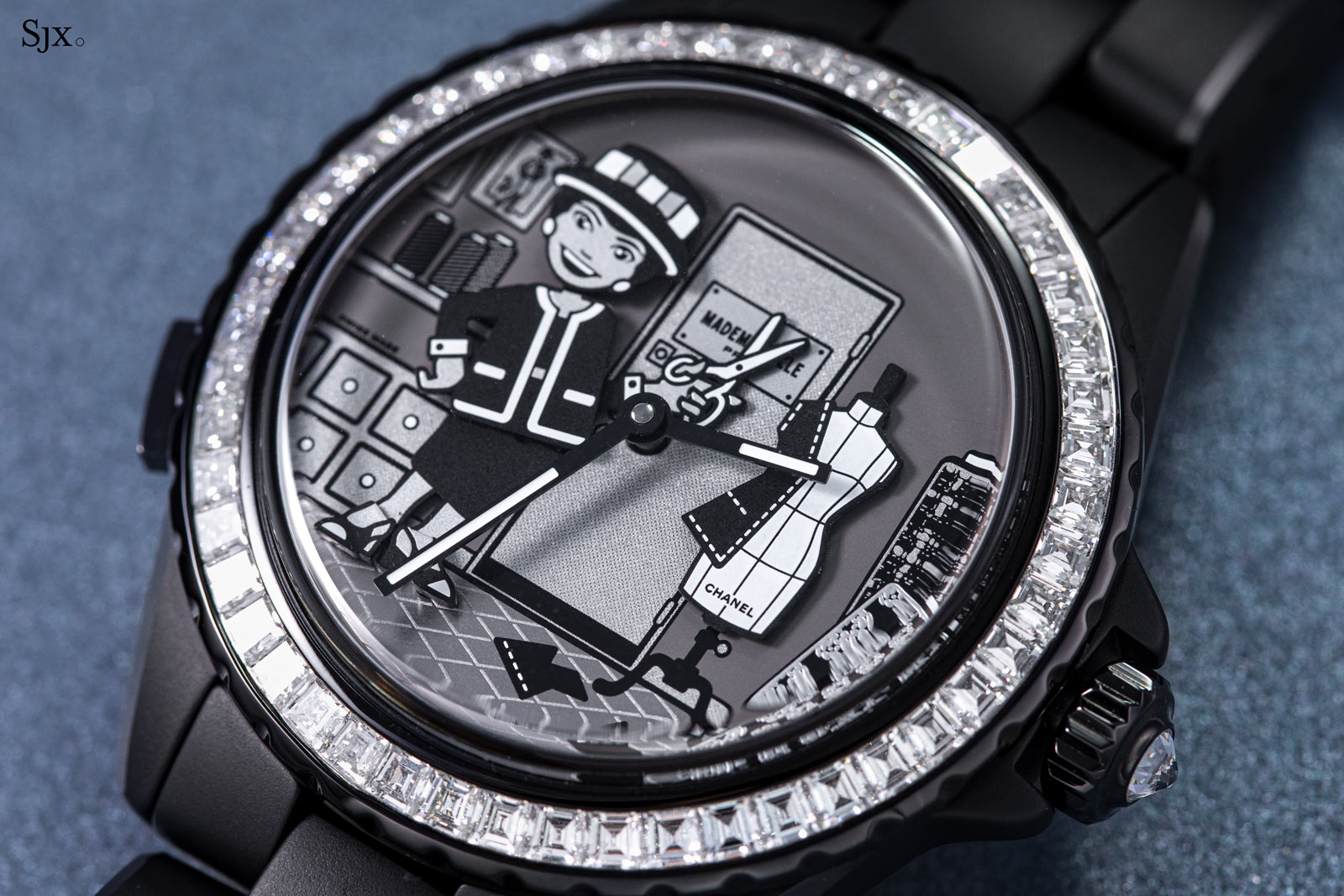
Cartoon Coco Chanel does a little dance when the automaton is activated
Small updates
It was also a year that saw many great watches get marginally better, with A. Lange & Söhne, Ulysse Nardin, Grand Seiko, and Tudor offering subtle upgrades to their greatest hits.
To mark the 25th anniversary of the illustrious Datograph, Lange added two limited edition models to the range including the first-ever Datograph in white gold and the magnificent (if extortionately priced) Datograph Perpetual Tourbillon Honeygold “Lumen”.
Though both watches were among the most spectacular pieces shown at the Palexpo, many had hoped for something more momentous to mark such an occasion. The brand will be launching two more watches at mid-year and in the fall, so perhaps another anniversary watch is in the pipeline.
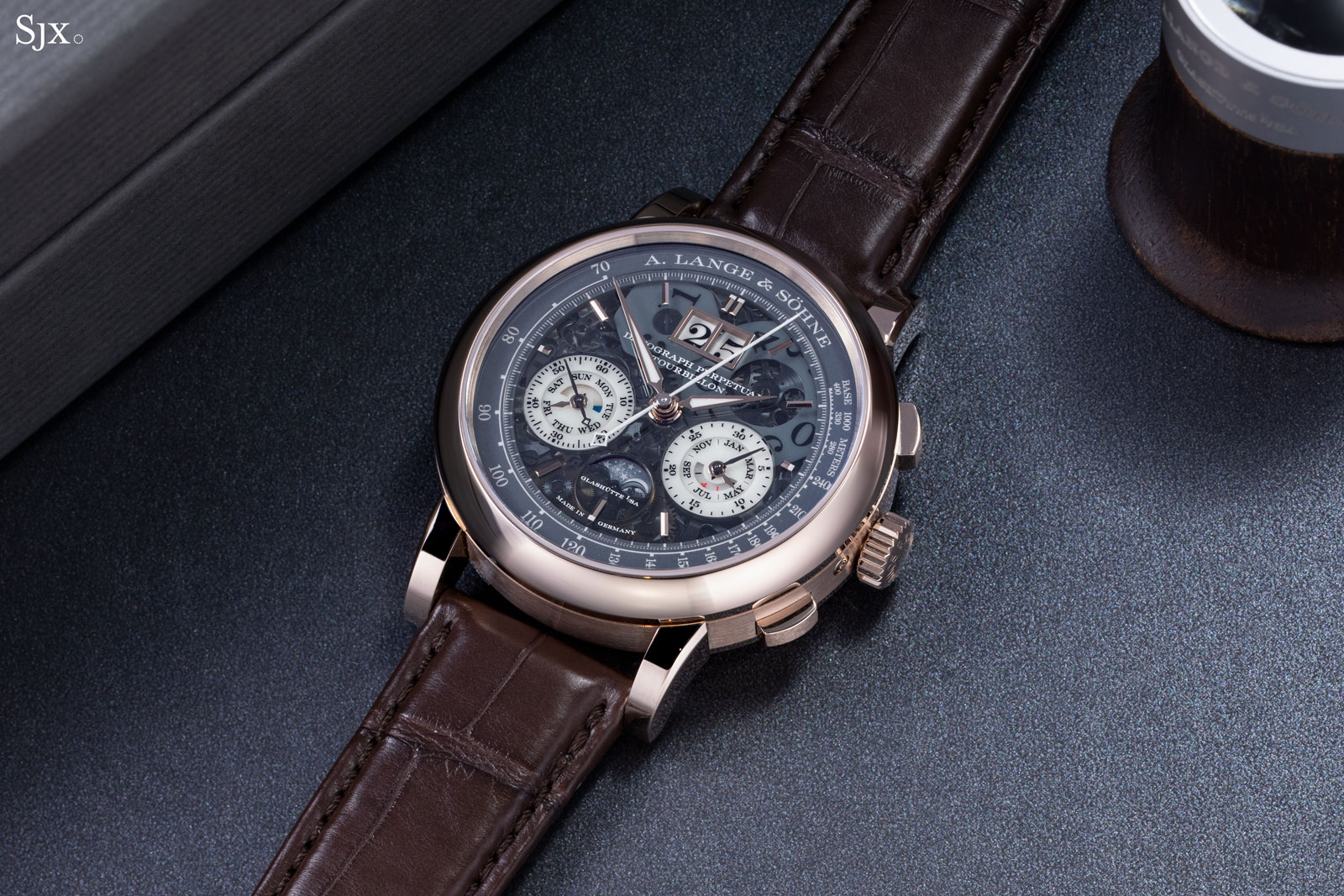
The €620,000 Datograph Perpetual Tourbillon Honeygold “Lumen”
For Ulysse Nardin, it was the year of the Freak, with an elaborate booth featuring an enormous recreation of the Freak S movement. The new Freak S Nomad replaces the original’s aventurine dial with a dial plate decorated with traditional hand guilloché.
The mix of truly avant-garde design, technical innovation, and traditional craft makes the Freak S Nomad a highly distinctive offering. In other news, it seems that Dr. Ludwig Oechslin, the self-taught watchmaker largely responsible for the renaissance of Ulysse Nardin in the 1990s, is returning to the brand, which is hopefully a sign of good things to come.
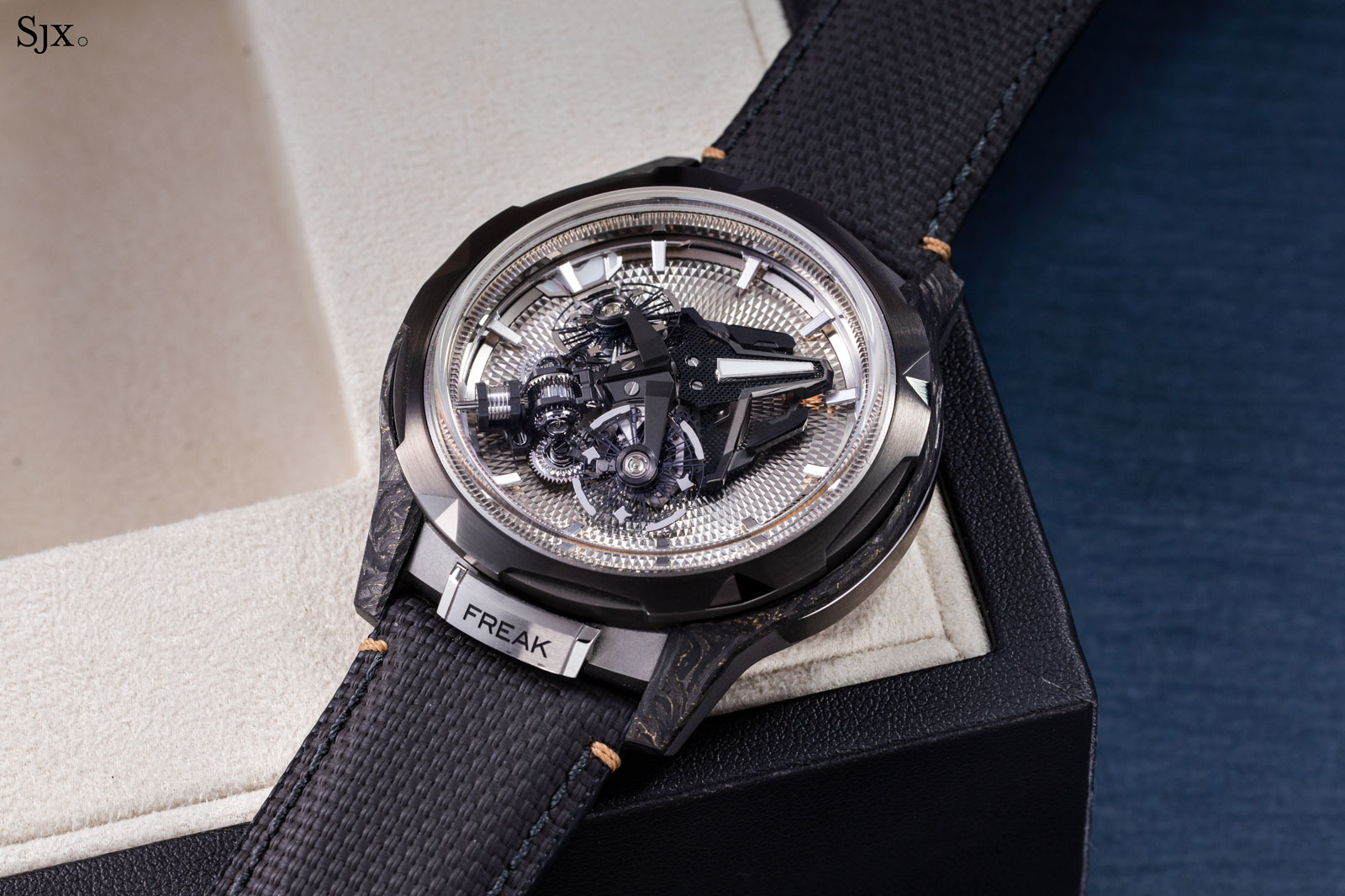
The Freak S Nomad with its traditional guilloche dial

The enormous Freak S movement in the Ulysse Nardin booth. Image – Watches & Wonders
The incremental upgrades continued at Grand Seiko, which debuted a new edition of its flagship Kodo tourbillon, featuring a brighter movement plating that does a better job showcasing both the fine finishing as well as the impressive architecture of the movement.
But the big news from Grand Seiko was the SLGW003, a slim new dress watch that features an all-new manually wound chronometer-grade movement based on the 9SA5. Available in gold as well as the brand’s proprietary “brilliant hard titanium”, an uncommon alloy for a dress watch, the SLGW003 also introduces a slimmer, more elegant take on the brand’s Evolution 9 design language.
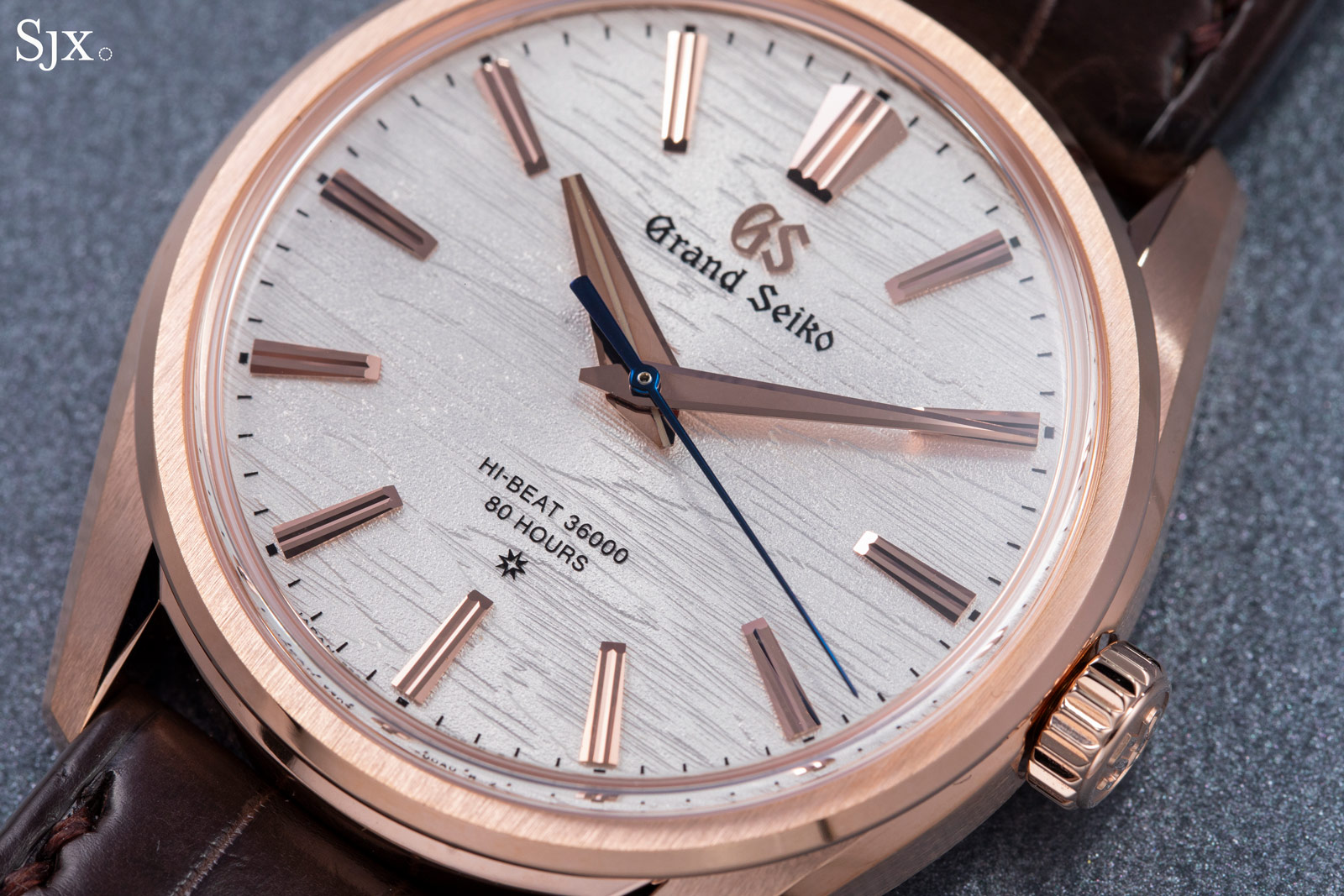
The Grand Seiko Evolution 9 SLGW003 in rose gold
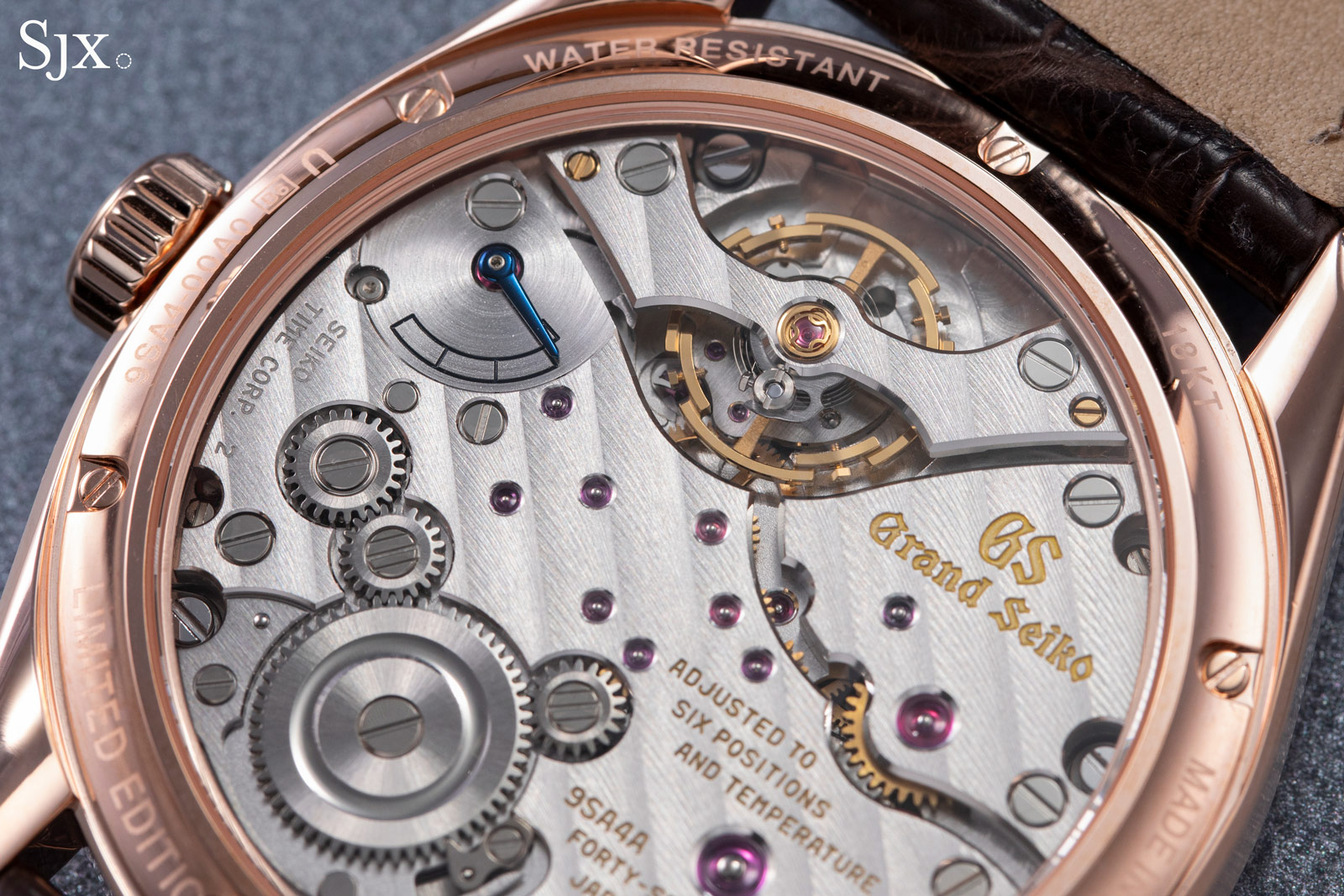
And the cal. 9SA4 inside
Tudor also expanded its range of METAS Master Chronometer-certified watches, with a new, no-frills version of the standard Black Bay and more notably, a GMT that combines both a scaled-down case and a crowd-pleasing black and red “Coke” bezel. The new Black Bay 58 GMT is likely the best value proposition amongst GMT watches in the sub-US$5,000 category.
While neither release is revolutionary, they nonetheless entrench Tudor’s dominant position within its price point. The tangible quality, from the rate guarantee to the tactile feel of the bezel action and screw-down crown, should be the envy of most watches at twice the price.
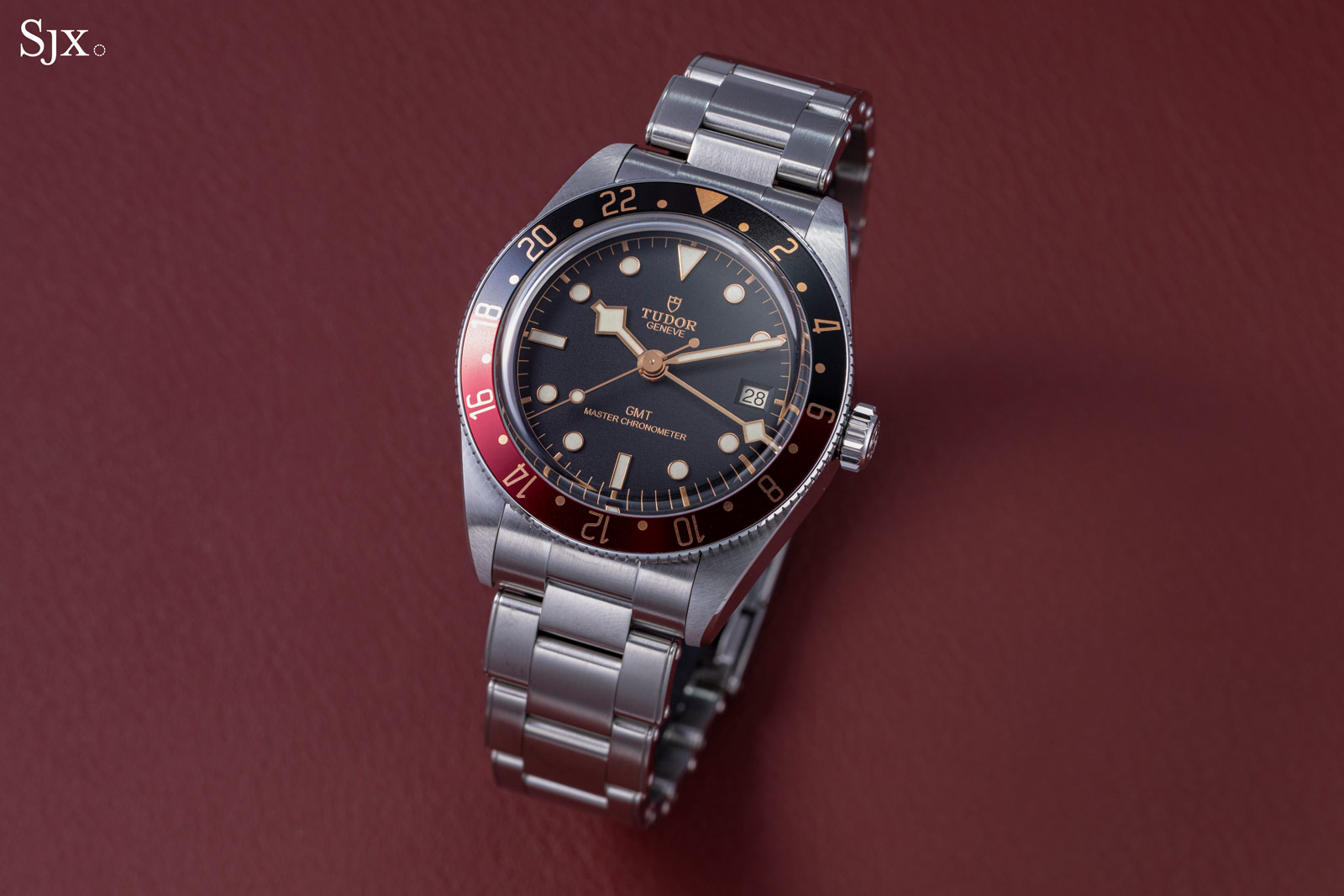
The Black Bay 58 GMT “Coke”
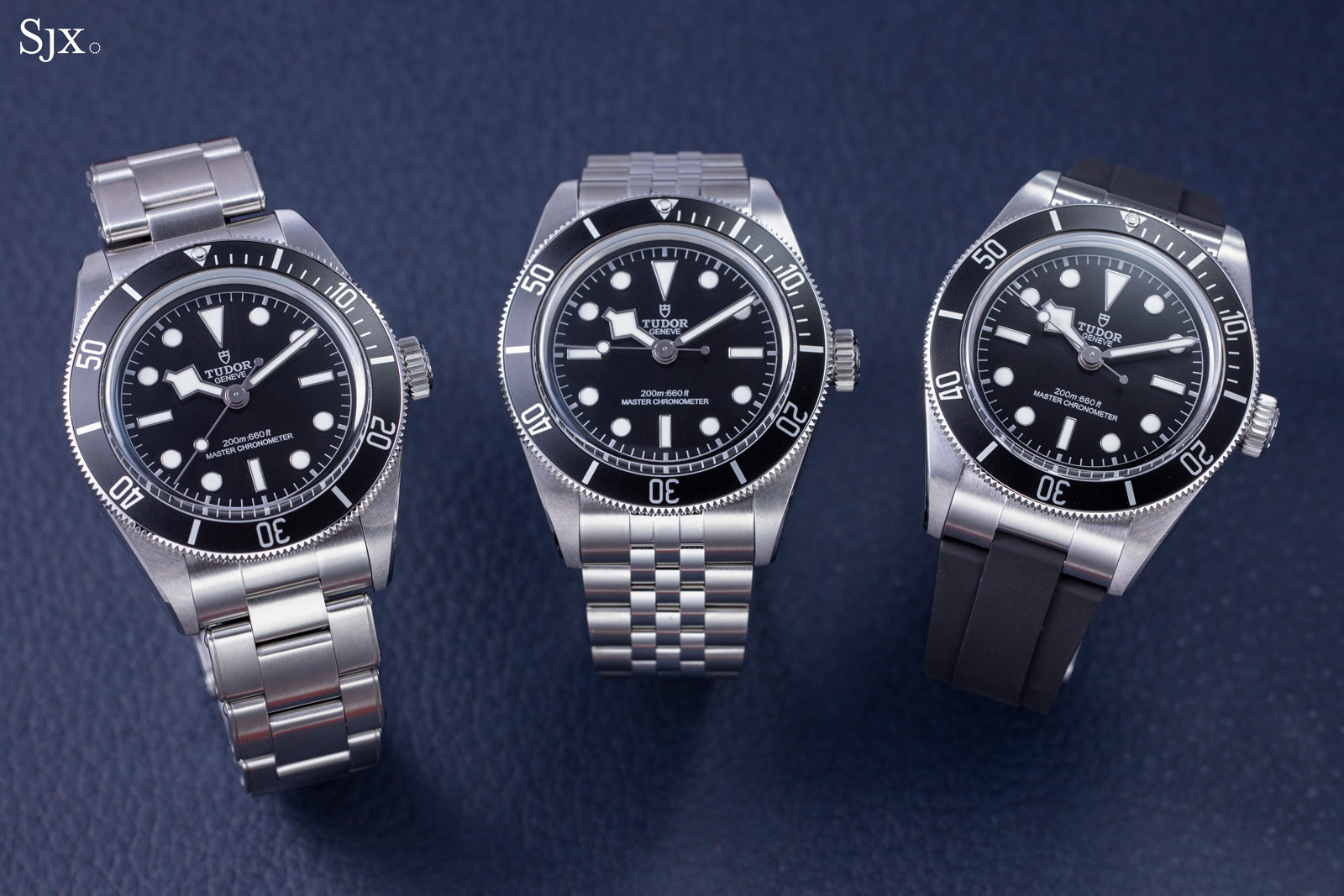
The latest Black Bay 41 with a no-nonsense black dial
Proof that a modest update can make a watch substantially more appealing is the Rolex Perpetual 1908 in platinum. In a first for a modern Rolex, the new 1908 gets a rice-grain guilloche dial made the traditional way, on a hand-operated rose engine.
Arguably the most robustly constructed dress watch in the world – while still maintaining dress watch proportions – the 1908 was a bit bland in its original iterations. The guilloche dial addresses that problem well.
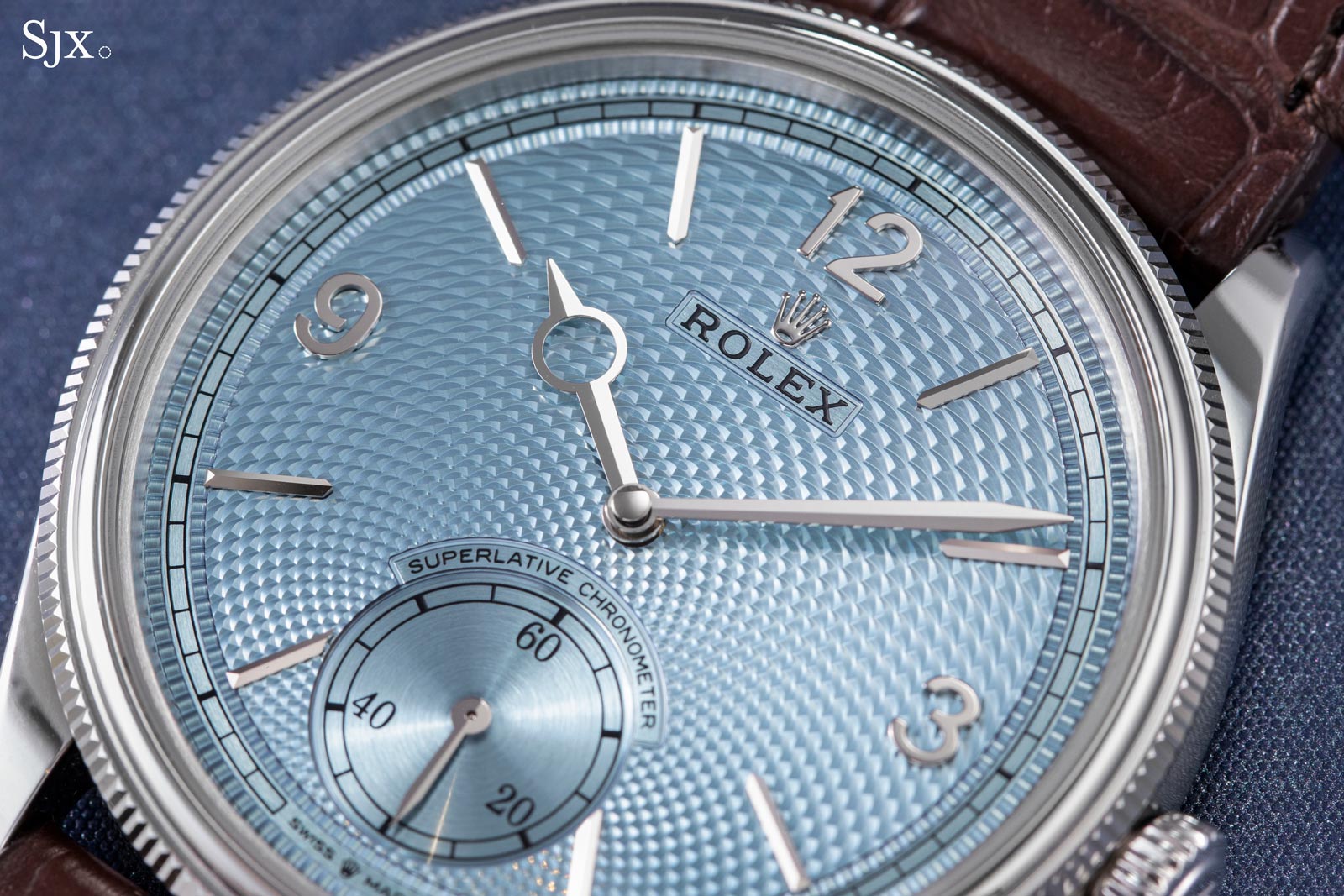
A artisanal touch in the Rolex 1908
Independents
It was also an interesting year for independent watchmakers. The big names were fairly conservative, with F.P. Journe unveiling a “rainbow” Élégante that was less of a new launch than a tribute to one of Mr Journe’s most enduring and formative friendships. But because the gemstones on the bezel are glass-ceramic, the Élégante “Gino’s Dream” is relatively affordable.
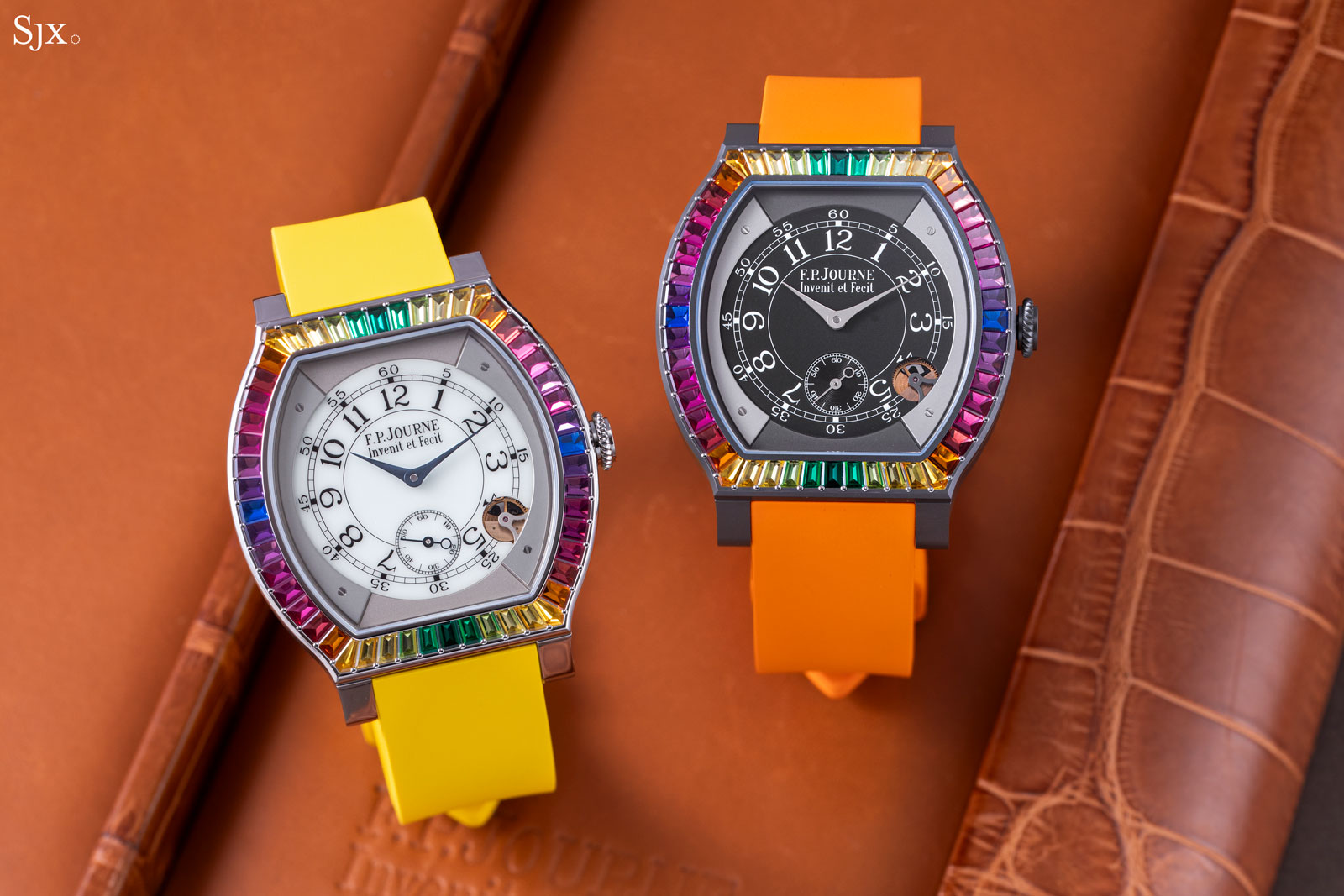
Gino’s dream in natural titanium (left) and Titalyt
The biggest launch from an established independent watchmaker was the Voutilainen Tourbillon 20th Anniversary, a limited edition of 60 watches (with 20 each in platinum, white or rose gold). Inspired Kari Voutilainen’s very first pocket watch that was completed in 1994, the anniversary tourbillon is typical Voutilainen in aesthetics and quality; in particular, the movement construction and finishing is outstanding.
However, and maybe surprisingly, the watch doesn’t feel novel. That might be due to the fact that the movement is based on an existing construction, or because it sticks so closely to the usual Voutilainen approach that it is predictable.
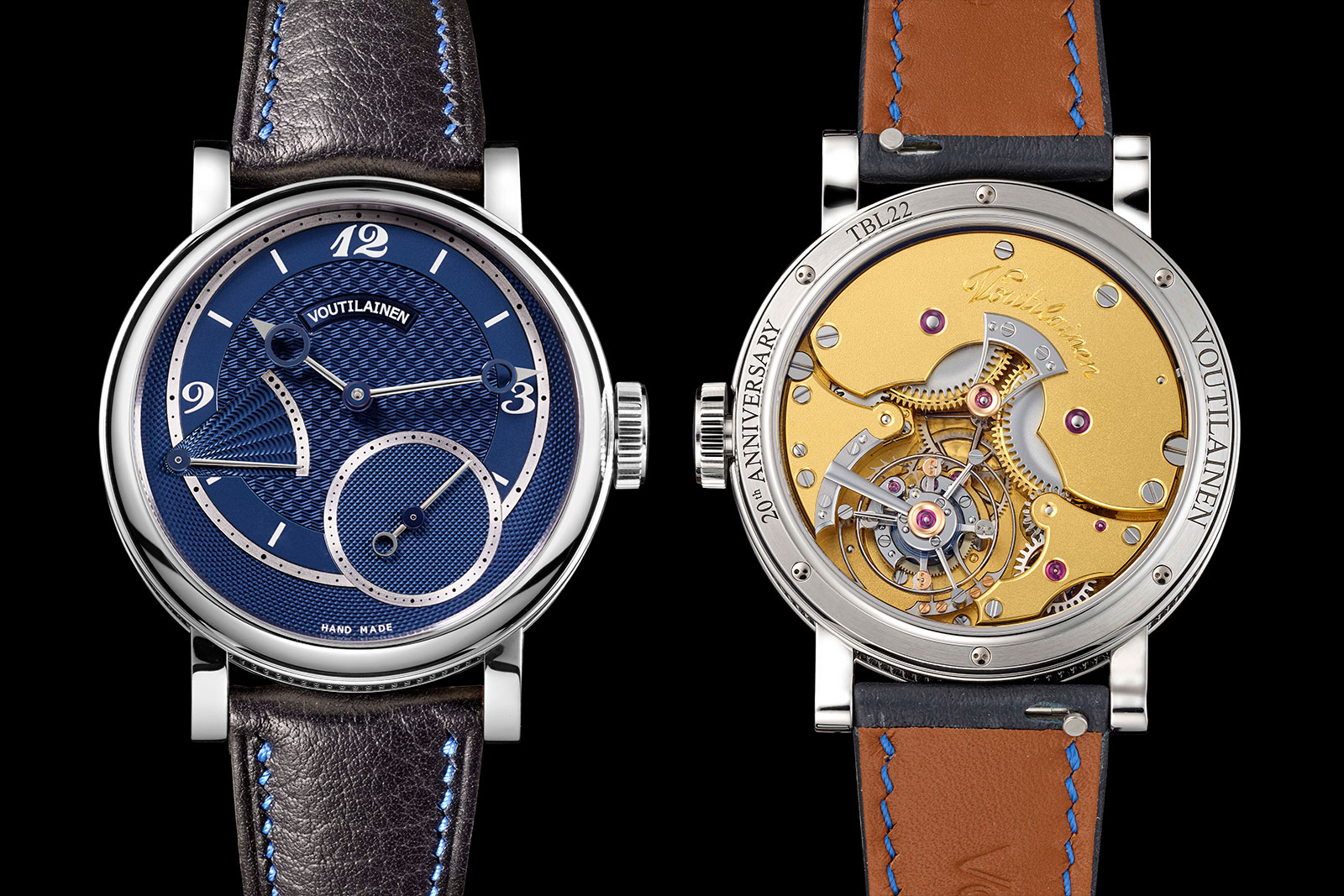
The Voutilainen Tourbillon 20th Anniversary. Image – Voutilainen
Some of the new faces picked up the slack – and there were a lot of new faces showing around Geneva outside Watches & Wonders. Although independent watchmaking has historically been about originality, many of the new arrivals feel formulaic.
Currently, crucial ingredients of that formula include a Voutilainen guilloche dial, a movement by Schwarz-Etienne or Chronode, and some prominent anglage by Philippe Narbel or Nathalie Jean-Louis. Talented as each of these suppliers are, the whole is sometimes less than the sum of the parts.
Paradoxically, one of the most interesting new movements is built on a modest ETA. Russian AHCI candidate Anton Suhanov launched the Chronotope, on paper a simple day-date watch with a retrograde display, but almost every aspect of the watch, from the ruby-tipped hands to the method of fine adjustment, shows attention to detail and a unique perspective.
Not only does the movement boasts a mystery rotor and pawl-based winding but also a proprietary regulator index. The watch is highly satisfying in operation, with a very crisp pusher action to advance the day display.
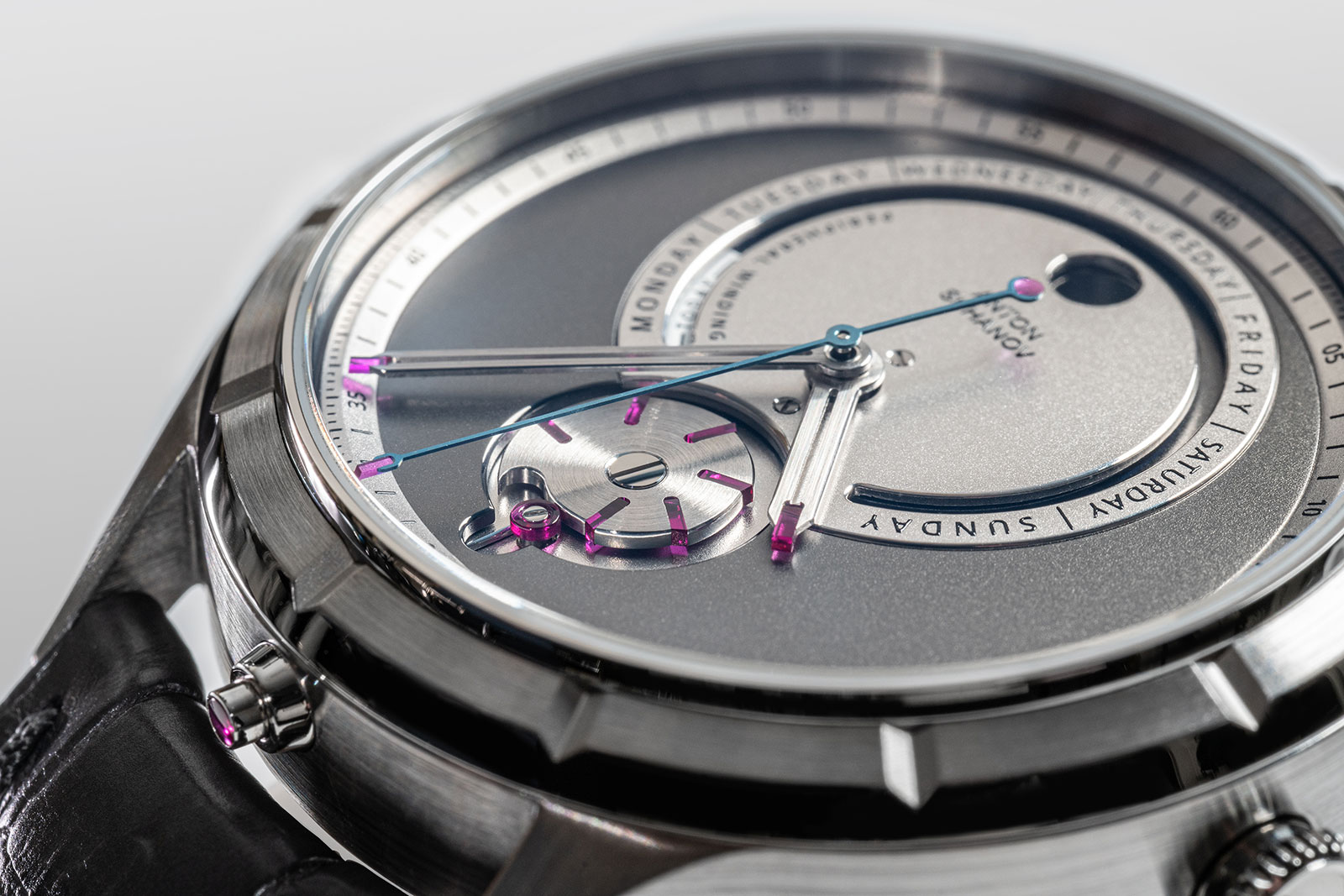
The snail cam on the dial that drives the day display of the Chronotope. Image – Anton Suhanov
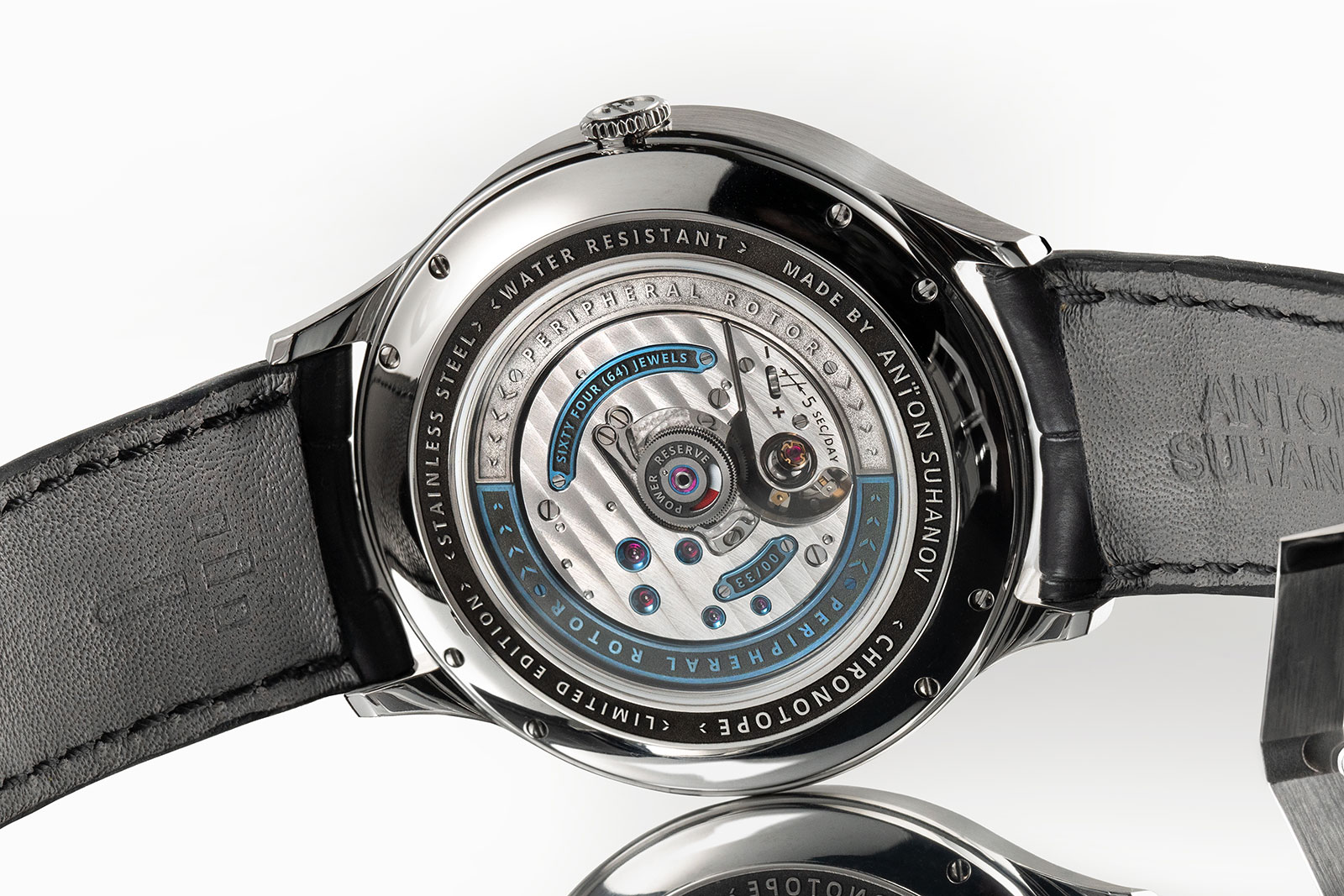
The Su100.1 movement. – Anton Suhanov
Another watch that shows outstanding attention to detail is the Mirage by ex-Breitling chief designer Sylvain Berneron. The Mirage is a time-only dress watch that is notable for both its all-gold execution and a distorted, organic design evocative of the Cartier Crash. Think of it as a Patek Philippe ref. 96 seen through warped lenses.
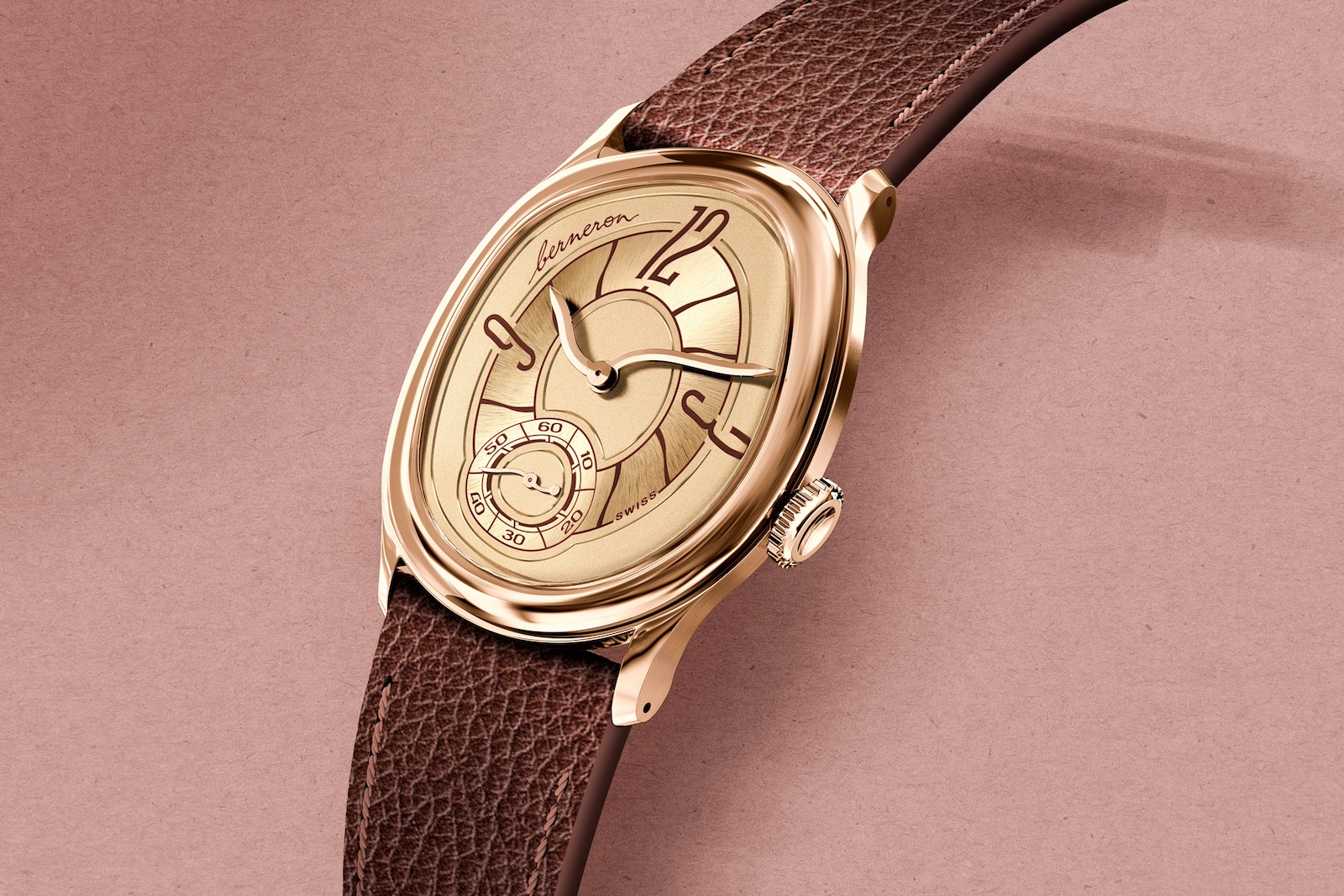
The Mirage in rose gold. Image – Berneron
While digital renders of the Mirage have circulated for a long time, the functional pieces have only just been revealed and certainly meet expectations.
The slim, organic form of the case melts on the wrist, and the solid gold construction (the case, dial, hands, movement plate and bridges, and spring bars are 18k gold) provides pleasing heft.
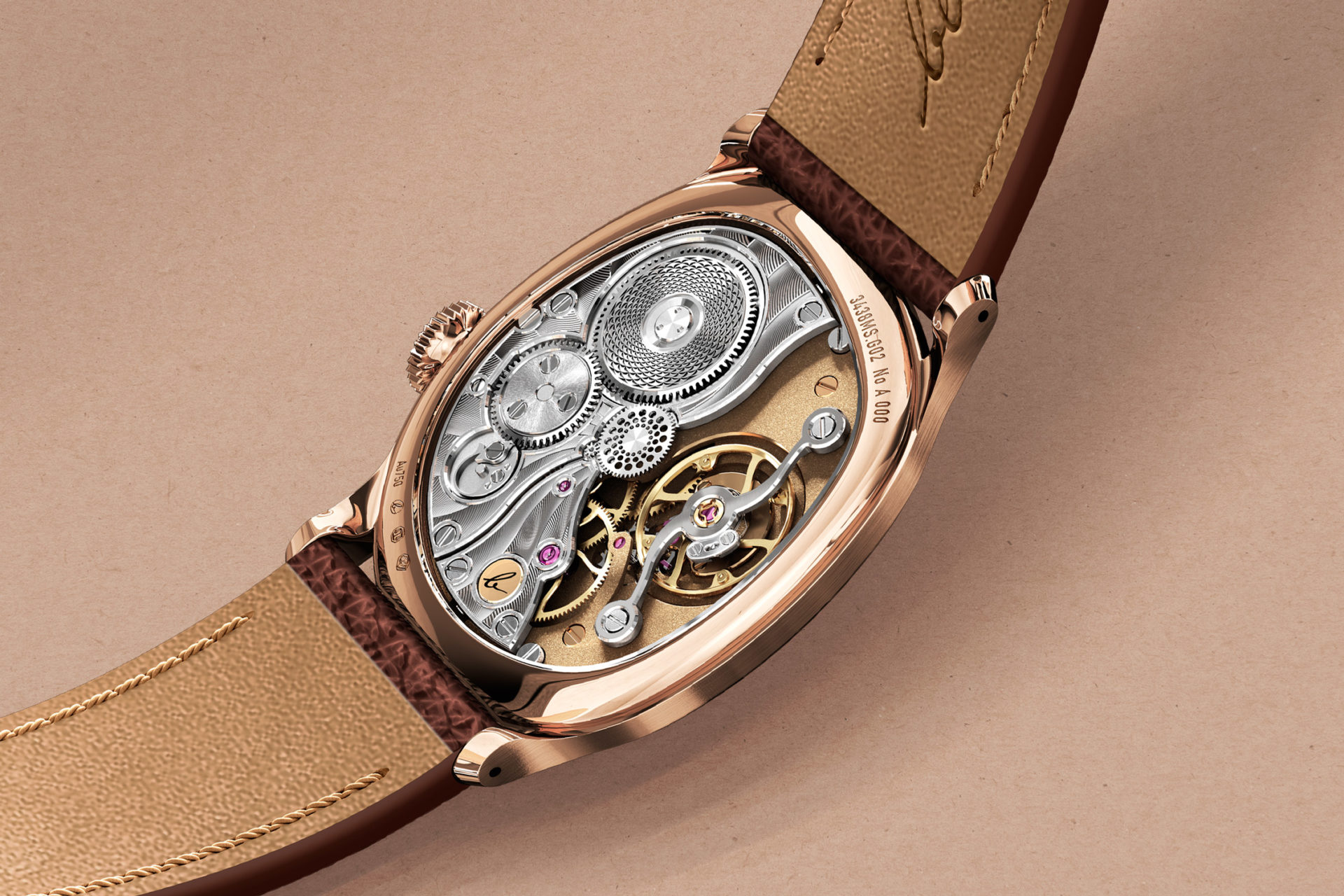
The hand-wound Mirage movement. Image – Berneron
Back to top.








